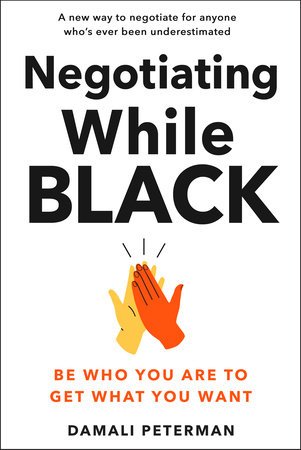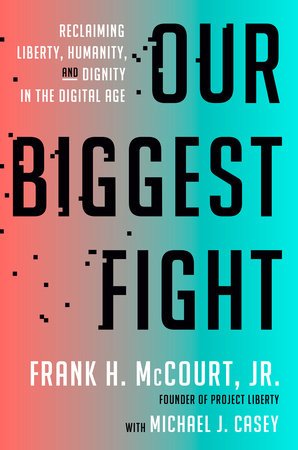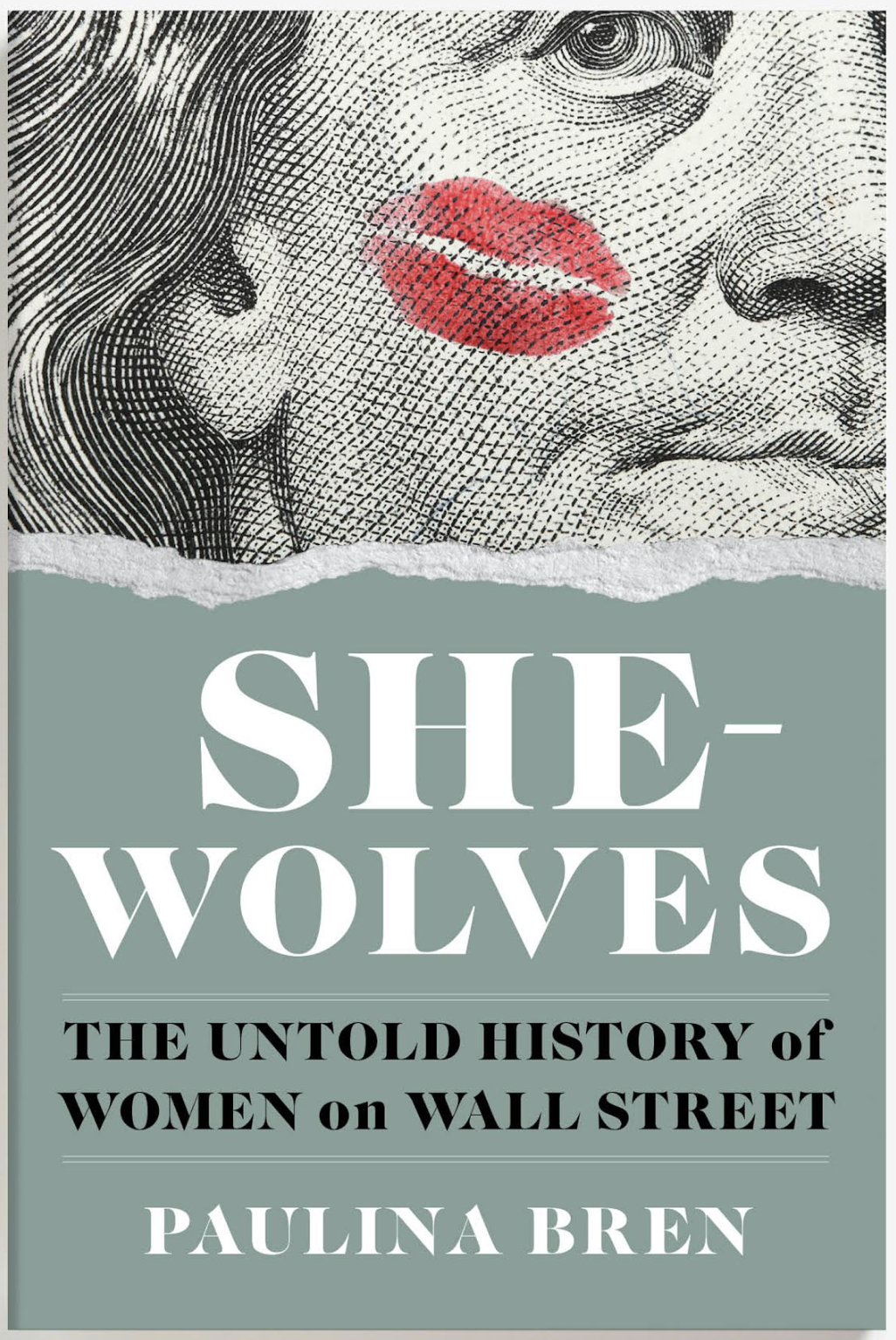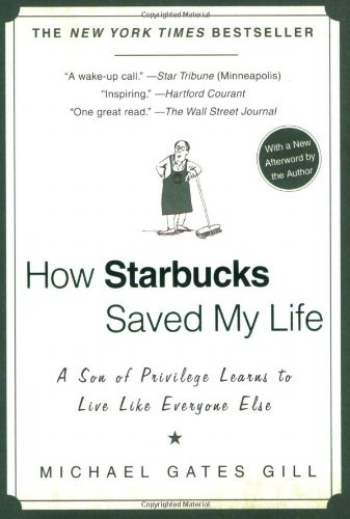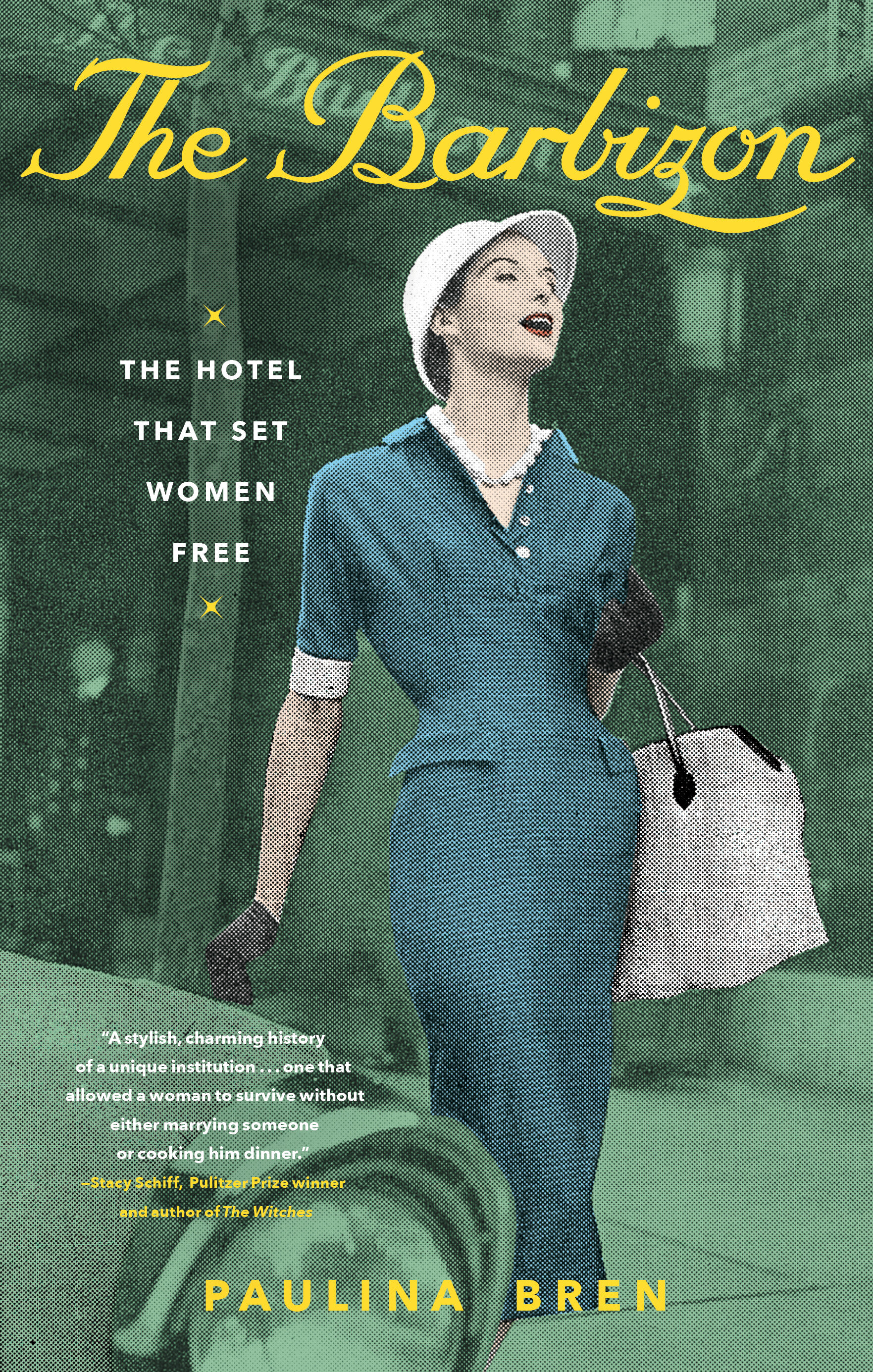
The Barbizon
Paulina Bren | Simon & Schuster 2021
From award-winning author Paulina Bren comes the first history of New York’s most famous residential hotel—The Barbizon—and the remarkable women who lived there.
The Barbizon tells the story of New York’s most glamorous women-only hotel, and the women—both famous and ordinary—who passed through its doors. World War I had liberated women from home and hearth, setting them on the path to political enfranchisement and gainful employment. Arriving in New York to work in the dazzling new skyscrapers, they did not want to stay in uncomfortable boarding houses; they wanted what men already had—exclusive residential hotels that catered to their needs, with daily maid service, cultural programs, workout rooms, and private dining.
The Barbizon would become the most famous residential hotel of them all, welcoming everyone from aspiring actresses, dancers, and fashion models to seamstresses, secretaries, and nurses. The Barbizon’s residents read like a who’s who: Titanic survivor Molly Brown; actresses Rita Hayworth, Joan Crawford, Grace Kelly, Tippi Hedron, Liza Minelli, Ali McGraw, Jaclyn Smith, and Phylicia Rashad; writers Sylvia Plath, Joan Didion, Diane Johnson, Gael Greene, and Meg Wolitzer; and so many more. But before they were household names, they were among the young women arriving at the Barbizon with a suitcase, and hope.
Beautifully written and impeccably researched, The Barbizon weaves together a tale that has, until now, never been told. It is an epic story of women’s ambition in the 20th century. The Barbizon Hotel offered its residents a room of their own and air to breathe, unfettered from family obligations and expectations. It gave women a chance to remake themselves however they pleased. No place had existed like it before, or has since.
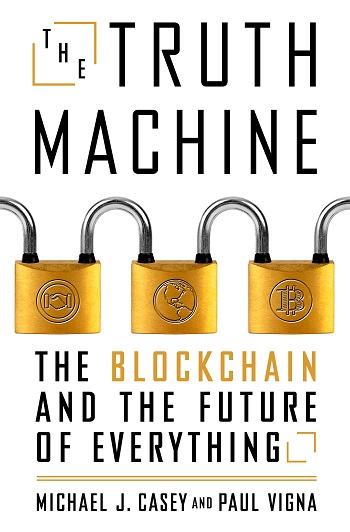
The Truth Machine
Michael J. Casey & Paul Vigna | 2018
From Michael J. Casey and Paul Vigna, the authors of The Age of Cryptocurrency, comes the definitive work on the Internet’s Next Big Thing: The Blockchain.
Big banks have grown bigger and more entrenched. Privacy exists only until the next hack. Credit card fraud is a fact of life. Many of the “legacy systems” once designed to make our lives easier and our economy more efficient are no longer up to the task. Yet there is a way past all this―a new kind of operating system with the potential to revolutionize vast swaths of our economy: the blockchain.
In The Truth Machine, Michael J. Casey and Paul Vigna demystify the blockchain and explain why it can restore personal control over our data, assets, and identities; grant billions of excluded people access to the global economy; and shift the balance of power to revive society’s faith in itself. They reveal the disruption it promises for industries including finance, tech, legal, and shipping.
Casey and Vigna expose the challenge of replacing trusted (and not-so-trusted) institutions on which we’ve relied for centuries with a radical model that bypasses them. The Truth Machine reveals the empowerment possible when self-interested middlemen give way to the transparency of the blockchain, while highlighting the job losses, assertion of special interests, and threat to social cohesion that will accompany this shift. With the same balanced perspective they brought to The Age of Cryptocurrency, Casey and Vigna show why we all must care about the path that blockchain technology takes―moving humanity forward, not backward.
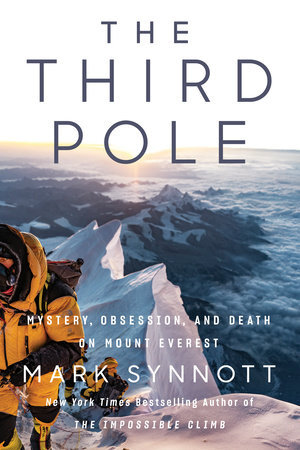
THE THIRD POLE: Mystery, Obsession, and Death on Mount Everest
Mark Synnott | Dutton 2021
Veteran climber Mark Synnott never planned on climbing Mount Everest, but a hundred-year mystery lured him into an expedition--and an awesome history of passionate adventure, chilling tragedy, and human aspiration unfolded.
On June 8, 1924, George Mallory and "Sandy" Irvine set out to stand on the roof of the world, where no one had stood before. They were last seen eight hundred feet shy of Everest's summit. A century later, we still don't know whether they achieved their goal, decades before Sir Edmund Hillary and Tensing Norgay did, in 1953. Irvine carried a Kodak camera with him to record their attempt, but it, along with his body, had never been found. Did Mallory and Irvine reach the summit and take a photograph before they fell to their deaths?
Mark Synnott made his own ascent up the infamous North Face along with a filmmaker using drone technology higher than any had previously flown. His goal: to find Irvine's body and the camera he carried that might have held a summit photo on its still-viable film. Synnott's quest led him from oxygen-deprivation training to archives and museums in England, to Kathmandu, the Tibetan High Plateau, and up the North Face into a storm during a season described as the one that broke Everest. An awful traffic jam of climbers at the very summit resulted in tragic deaths. Sherpas revolted. Chinese government agents turned adversarial. An Indian woman crawled her way to safety and survival. Synnott himself went off the safety rope--if he had slipped, no one would have been able to save him--desperate to solve the mystery.
A magnificent story a la The Lost City of Z, The Third Pole conveys the miracle of a mountain the world wants to own, and the first explorers who may have done so.
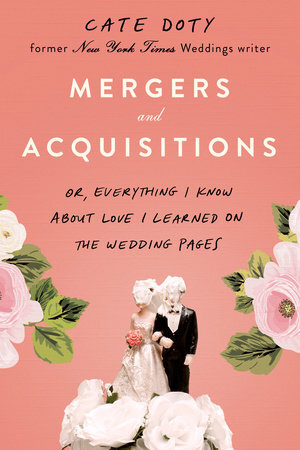
MERGERS AND ACQUISITIONS: Or, Everything I Know About Love I Learned on the Wedding Pages
Cate Doty | Putnam 2021
A compulsively readable behind-the-scenes memoir that takes readers inside the weddings section of the New York Times--the good, bad, and just plain weird--through the eyes of a young reporter just as she's falling in love herself.
Growing up in the south, where tradition reigns supreme, Cate Doty thought about weddings . . . a lot. She catered for them, she attended many, she imagined her own. So, when she moved to New York City in pursuit of love--and to write for The New York Times--she finds her natural home in the wedding section, a first step to her own happily-ever-after, surely. Soon Cate is thrown into the cutthroat world of the metropolitan society pages, experiencing the lengths couples go to have their announcements accepted and the lengths the writers go in fact-checking their stories; the surprising, status-signaling details that matter most to brides and grooms; and the politics of the paper at a time of vast cultural and industry changes.
Reporting weekly on couples whose relationships seem enviable--or eye-roll worthy--and dealing with WASPy grandparents and last-minute snafus, Cate is surrounded by love, or what we're told to believe is love. But when she starts to take the leap herself, she begins to ask her own questions about what it means to truly commit...
Warm, witty, and keenly observed, Mergers and Acquisitions is an enthralling dive into one of society's most esteemed institutions, its creators and subjects, and a young woman's coming-of-age.
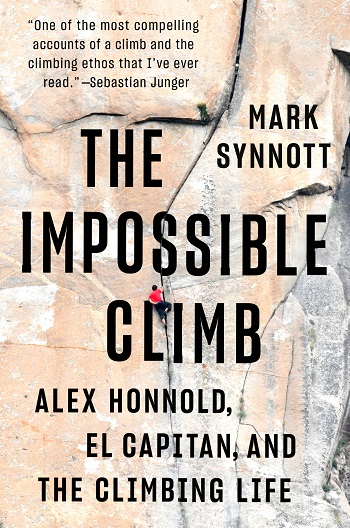
The Impossible Climb
Mark Synnott | Dutton 2018
The Impossible Climb climaxes with Alex Honnold's unprecedented, almost unimaginable feat: a 3,000-foot vertical climb up El Capitan in Yosemite, without a rope. Mark Synnott tells the story in the context of a deeply reported account of his ten-year friendship with Honnold, multiple climbing expeditions, and the climbing ethos they share.
The climbing community had long considered a "free solo" ascent of El Capitan an impossible feat so far beyond human limits that it was not worth thinking about. When Alex Honnold topped out at 9:28 am on June 3, 2017, having spent fewer than four hours on his historic ascent, the world gave a collective gasp. His friend Tommy Caldwell, who free climbed (with a rope) the nearby Dawn Wall in 2015, called Alex's ascent "the moon landing of free soloing." The New York Times described it as "one of the great athletic feats of any kind, ever." It was "almost unbearable to watch," writes Synnott.
This majestic work of personal history delves into a raggedy culture that emerged decades earlier during Yosemite's Golden Age, when pioneering climbers like Royal Robbins and Warren Harding invented the sport that Honnold would turn on its ear. Synnott paints an authentic, wry portrait of climbing history, profiling Yosemite heroes John Bachar, Peter Croft, Dean Potter, and the harlequin tribe of climbers known as the Stonemasters. A veteran of the North Face climbing team and contributor to National Geographic, Synnott weaves in his own amateur and professional experiences with poignant insight and wit. Tensions burst on the mile-high northwest face of Pakistan's Great Trango Tower; photographer/climber Jimmy Chin miraculously persuades an intransigent official in the Borneo jungle to allow Honnold's first foreign expedition, led by Synnott, to continue; armed bandits accost the same trio at the foot of a tower in the Chad desert . . .
The Impossible Climb is an emotional drama driven by people exploring the limits of human potential and seeking a perfect, dialed-in dance with nature. They dare beyond the ordinary, but this story of the sublime is really about all of us. Who doesn't need to face down fear and make the most of the time we have?

The Scientist and the Spy
Mara Hvistendahl | Riverhead 2020
A riveting true story of industrial espionage in which a Chinese-born scientist is pursued by the U.S. government for trying to steal trade secrets, by a finalist for the Pulitzer Prize in nonfiction.
In September 2011, sheriff’s deputies in Iowa encountered three ethnic Chinese men near a field where a farmer was growing corn seed under contract with Monsanto. What began as a simple trespassing inquiry mushroomed into a two-year FBI operation in which investigators bugged the men’s rental cars, used a warrant intended for foreign terrorists and spies, and flew surveillance planes over corn country—all in the name of protecting trade secrets of corporate giants Monsanto and DuPont Pioneer. In The Scientist and the Spy, Hvistendahl gives a gripping account of this unusually far-reaching investigation, which pitted a veteran FBI special agent against Florida resident Robert Mo, who after his academic career foundered took a questionable job with the Chinese agricultural company DBN—and became a pawn in a global rivalry.
Industrial espionage by Chinese companies lies beneath the United States’ recent trade war with China, and it is one of the top counterintelligence targets of the FBI. But a decade of efforts to stem the problem have been largely ineffective. Through previously unreleased FBI files and her reporting from across the United States and China, Hvistendahl describes a long history of shoddy counterintelligence on China, much of it tinged with racism, and questions the role that corporate influence plays in trade secrets theft cases brought by the U.S. government. The Scientist and the Spy is both an important exploration of the issues at stake and a compelling, involving read.
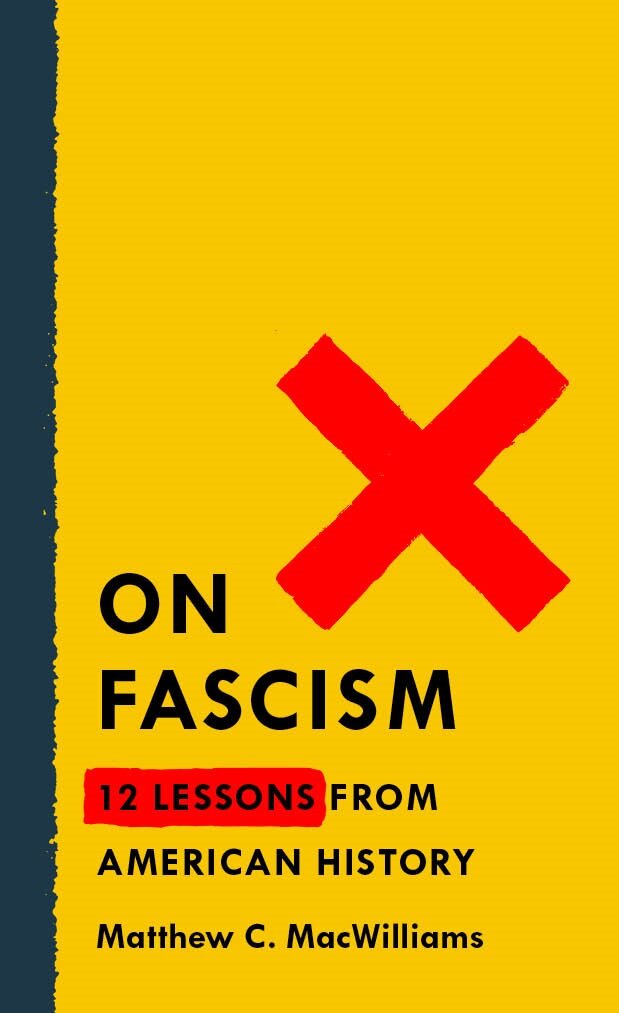
On Fascism: 12 Lessons from American History
Matthew C. MacWilliams | St. Martin’s 2020
"The twelve lessons in On Fascism draws from American history and brilliantly complement those of Timothy Snyder’s On Tyranny."
―Laurence Tribe
An expert on American authoritarianism offers a searing rebuke of the exceptional narrative that dominates our understanding of US history. In 12 lessons, Matthew C. MacWilliams' On Fascism exposes the divisive rhetoric, strongman tactics, violent othering, and authoritarian attitudes that course through American history and compete with our egalitarian, democratic aspirations. Trumpism isn’t new, but rooted in our refusal to come to terms with this historical reality.
The United States of Lyncherdom, as Mark Twain labeled America. Lincoln versus Douglas. The Chinese Exclusion Act. The Trail of Tears. The internment of Japanese-Americans. The Palmer Raids. McCarthyism. The Surveillance State. At turning points throughout history, as we aspired toward great things, we also witnessed the authoritarian impulse drive policy and win public support. Only by confronting and reconciling this past, can America move forward into a future rooted in the motto of our Republic since 1782: e pluribus unum (out of many, one).
But this book isn’t simply an indictment. It is also a celebration of our spirit, perseverance, and commitment to the values at the heart of the American project. Along the way, we learn about many American heroes – like Ida B. Wells, who dedicated her life to documenting the horrors of lynching throughout the nation, or the young Jewish-American who took a beating for protesting a Nazi rally in New York City in 1939. Men and women who embodied the soaring, revolutionary proclamations set forth in the Declaration of Independence and the Preamble to the Constitution.
On Fascism is both an honest reckoning and a call for reconciliation. Denial and division will not save the Republic, but coming to terms with our history might.

The Sediments of Time
Meave & Samira Leakey | Houghton Mifflin Harcourt 2020
Meave Leakey’s thrilling, high-stakes memoir—written with her daughter Samira—encapsulates her distinguished life and career on the front lines of the hunt for our human origins, a quest made all the more notable by her stature as a woman in a highly competitive, male-dominated field.
In The Sediments of Time, preeminent paleoanthropologist Meave Leakey brings us along on her remarkable journey to reveal the diversity of our early pre-human ancestors and how past climate change drove their evolution. She offers a fresh account of our past, as recent breakthroughs have allowed new analysis of her team’s fossil findings and vastly expanded our understanding of our ancestors.
Meave’s own personal story is replete with drama, from thrilling discoveries on the shores of Lake Turkana to run-ins with armed herders and every manner of wildlife, to raising her children and supporting her renowned paleoanthropologist husband Richard Leakey’s ambitions amidst social and political strife in Kenya. When Richard needs a kidney, Meave provides him with hers, and when he asks her to assume the reins of their field expeditions after he loses both legs in a plane crash, the result of likely sabotage, Meave steps in.
The Sediments of Time is the summation of a lifetime of Meave Leakey’s efforts; it is a compelling picture of our human origins and climate change, as well as a high-stakes story of ambition, struggle, and hope.
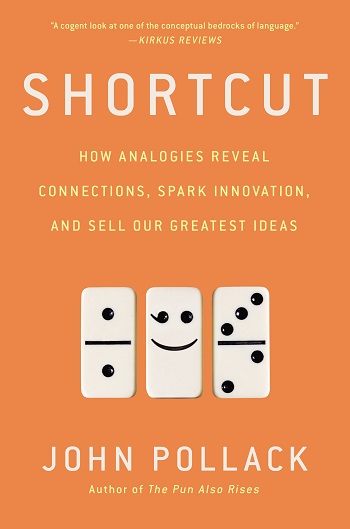
Shortcut
John Pollack | Avery 2014
A former presidential speechwriter for Bill Clinton explores the hidden power of analogy to fuel thought, connect ideas, spark innovation, and shape outcomes.
From the meatpacking plants that inspired Henry Ford’s first moving assembly line to the domino theory that led America into Vietnam to the “bicycle for the mind” that Steve Jobs envisioned as the Macintosh computer, analogies have played a dynamic role in shaping the world around us—and still do today.
Analogies are far more complex than their SAT stereotype and lie at the very core of human cognition and creativity. Once we become aware of this, we start seeing them everywhere—in ads, apps, political debates, legal arguments, logos, and euphemisms, to name just a few. At their very best, analogies inspire new ways of thinking, enable invention, and motivate people to action. Unfortunately, not every analogy that rings true is true. That’s why, at their worst, analogies can deceive, manipulate, or mislead us into disaster. The challenge? Spotting the difference before it’s too late.
Rich with engaging stories, surprising examples, and a practical method to evaluate the truth or effectiveness of any analogy, Shortcut will improve critical thinking, enhance creativity, and offer readers a fresh approach to resolving some of today’s most intractable challenges.
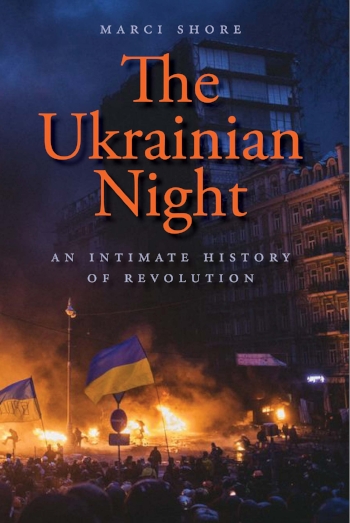
The Ukrainian Night
Marci Shore | Yale University Press 2018
A vivid and intimate account of the Ukrainian Revolution, the rare moment when the political became the existential
What is worth dying for? While the world watched the uprising on the Maidan as an episode in geopolitics, those in Ukraine during the extraordinary winter of 2013–14 lived the revolution as an existential transformation: the blurring of night and day, the loss of a sense of time, the sudden disappearance of fear, the imperative to make choices.
In this lyrical and intimate book, Marci Shore evokes the human face of the Ukrainian Revolution. Grounded in the true stories of activists and soldiers, parents and children, Shore’s book blends a narrative of suspenseful choices with a historian’s reflections on what revolution is and what it means. She gently sets her portraits of individual revolutionaries against the past as they understand it—and the future as they hope to make it. In so doing, she provides a lesson about human solidarity in a world, our world, where the boundary between reality and fiction is ever more effaced.
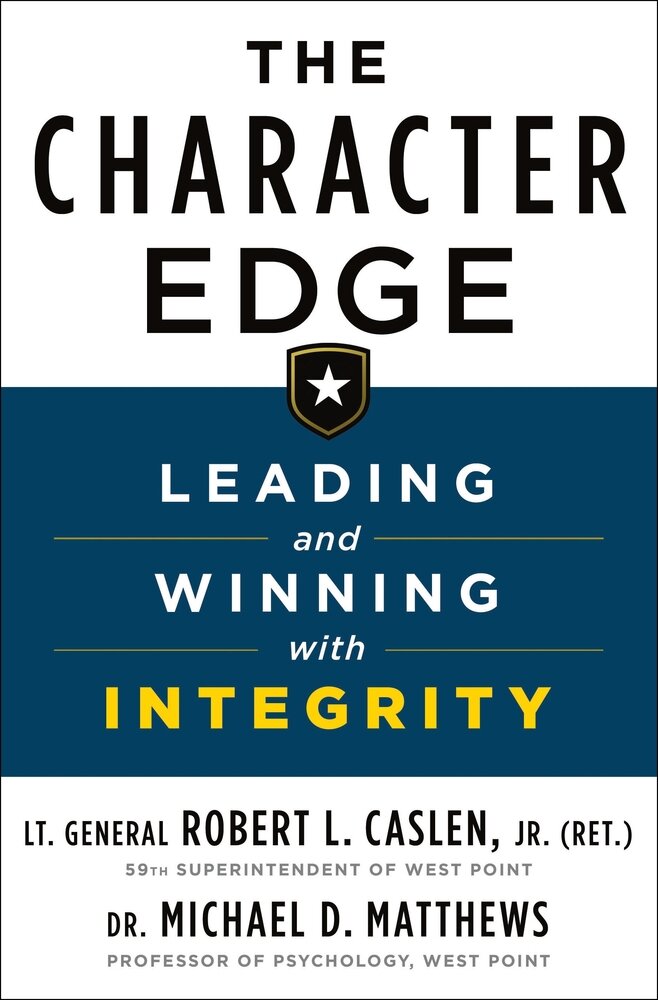
The Character Edge
Lt. General Robert L. Caslen, Jr. and Dr. Michael D. Matthews | St. Martin’s Press 2020
The former superintendent at West Point and a psychologist explain why all successful leaders rely on a foundation of strong character.
Among the most successful leaders throughout history―from Abe Lincoln to Rosa Parks, Mahatma Gandhi to Susan B. Anthony, Martin Luther King, Jr. to Nelson Mandela―some were brilliant mathematicians and economists, others were creative visionaries, still others were masterful at strategic planning. Their mastery of their field wasn’t the secret to their highly effective leadership. All of their skill, grit, resilience, charisma, and courage emanated from one thing: their strength of character.
Character―the moral values and habits of an individual―is in the spotlight now more than perhaps at any other point in modern history. Politicians distort facts. Corporations cheat customers and investors. Athletes are caught using illegal supplements. In addition to harming our culture at large, these failures of character have a profound and undermining impact on leadership.
The authors of this book are experts on the value of character, its correlation with successful leadership, and how to build it in individuals and prospective leaders. General Robert L. Caslen, Jr. served the US Army for over 43 years and served as Superintendent at the US Military Academy at West Point. Psychologist Dr. Michael D. Matthews is a Professor of Engineering Psychology at West Point who has focused on the psychology of character for years. Together they witnessed firsthand that raw talent is not enough to stand on its own; successful leadership relies on the critical foundation of a strong character.
In The Character Edge they leverage their perspectives to offer an empowering, story-driven argument―backed by the latest scientific research―that character is vital to success. They give readers the tools to build and sustain character in themselves and their organizations by testing readers' strengths of the gut, head and heart and teaching how to build trust and nurture the seeds of character.
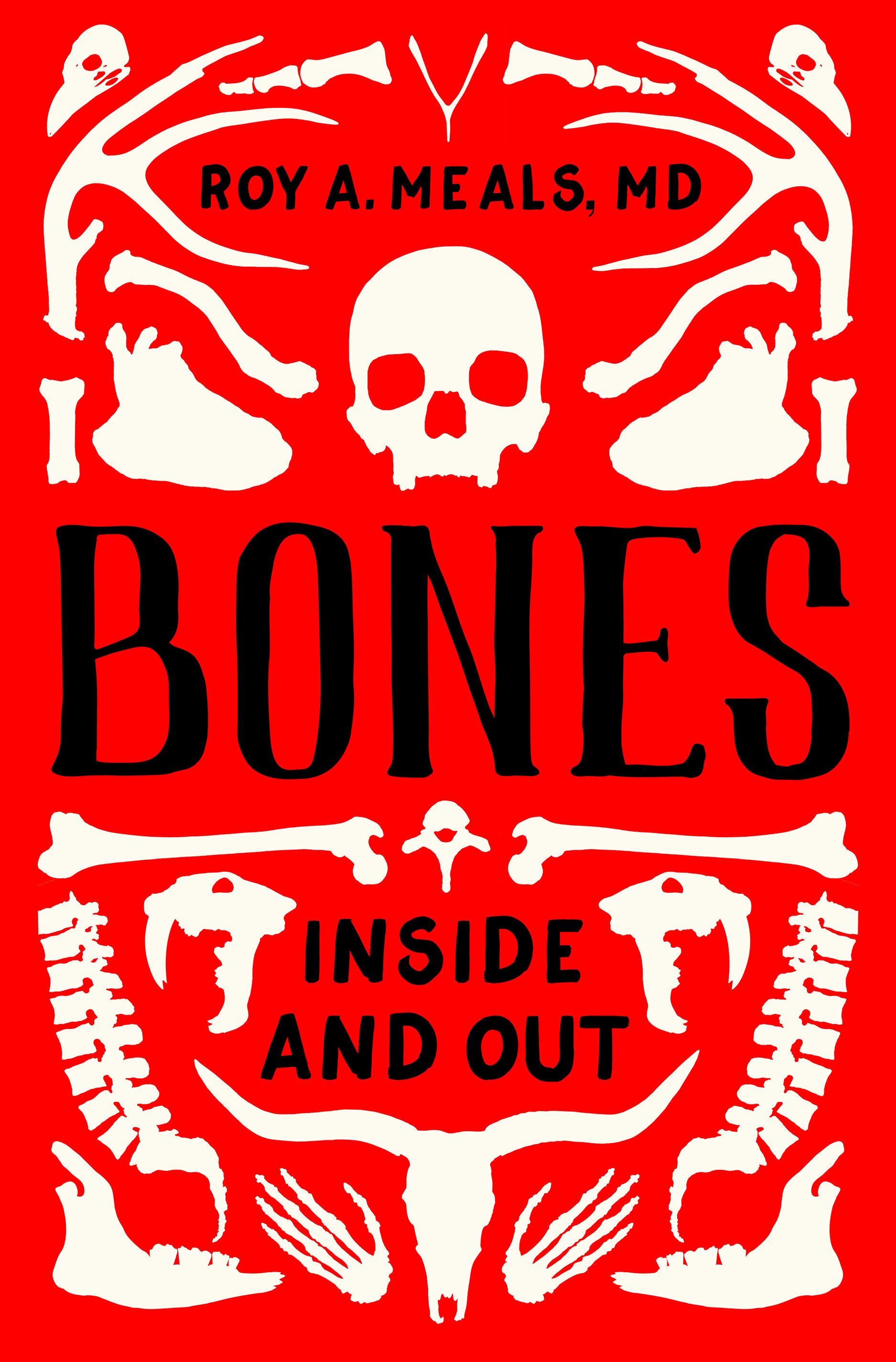
Bones: Inside and Out
Roy A. Meals, MD | W. W. Norton & Company 2020
A lively, illustrated exploration of the 500-million-year history of bone, a touchstone for understanding vertebrate life and human culture.
Human bone is versatile and entirely unique: it repairs itself without scarring, it’s lightweight but responds to stresses, and it’s durable enough to survive for millennia. In Bones, orthopedic surgeon Roy A. Meals explores and extols this amazing material that both supports and records vertebrate life.
Inside the body, bone proves itself the world’s best building material. Meals examines the biological makeup of bones; demystifies how they grow, break, and heal; and compares the particulars of human bone to variations throughout the animal kingdom. In engaging and clear prose, he debunks familiar myths―humans don’t have exactly 206 bones―and illustrates common bone diseases, like osteoporosis and arthritis, and their treatments. Along the way, he highlights the medical innovations―from the first X-rays to advanced operative techniques―that enhance our lives and introduces the giants of orthopedic surgery who developed them.
After it has supported vertebrate life, bone reveals itself in surprising ways―sometimes hundreds of millions of years later. With enthusiasm and humor, Meals investigates the diverse roles bone has played in human culture throughout history. He highlights allusions to bone in religion and literature, from Adam’s rib to Hamlet’s skull, and uncovers its enduring presence as fossils, technological tools, and musical instruments ranging from the Tibetan thighbone kangling horn to everyday drumsticks. From the dawn of civilization through to the present day, humankind has repurposed bone to serve and protect, and even to teach, amuse, and inspire.
Approachable and entertaining, Bones richly illuminates our bodies’ essential framework.
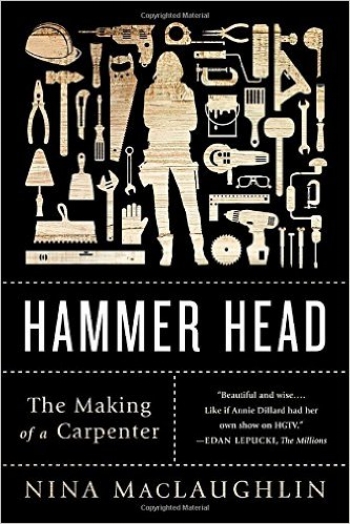
Hammer Head
Nina MacLaughlin | Norton 2015
“Reading Hammer Head, like consuming Cheryl Strayed’s Wild, feels like a crucial education.”―Isabella Biedenharn, Entertainment Weekly
Nina MacLaughlin spent her twenties working at a Boston newspaper, sitting behind a desk and staring at a screen. Yearning for more tangible work, she applied for a job she saw on Craigslist―Carpenter’s Assistant: Women strongly encouraged to apply―despite being a Classics major who couldn't tell a Phillips from a flathead screwdriver. She got the job, and in Hammer Head she tells the rich and entertaining story of becoming a carpenter.
Writing with infectious curiosity, MacLaughlin describes the joys and frustrations of making things by hand, reveals the challenges of working as a woman in an occupation that is 99 percent male, and explains how manual labor changed the way she sees the world. We meet her unflappable mentor, Mary, a petite but tough carpenter-sage (“Be smarter than the tools!”), as well as wild demo dudes, foul-mouthed plumbers, grizzled hardware store clerks, and the colorful clients whose homes she and Mary work in.
Whisking her readers from job to job―building a wall, remodeling a kitchen, gut-renovating a house―MacLaughlin examines the history of the tools she uses and the virtues and varieties of wood. Throughout, she draws on the wisdom of Ovid, Annie Dillard, Studs Terkel, and Mary Oliver to illuminate her experience of work. And, in a deeply moving climax, MacLaughlin strikes out on her own for the first time to build bookshelves for her own father.
Hammer Head is a passionate book full of sweat, swearing, bashed thumbs, and a deep sense of finding real meaning in work and life.
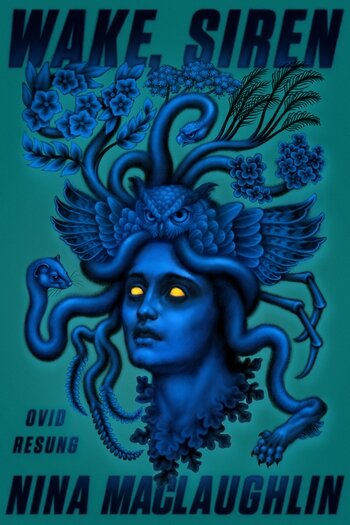
WAKE, SIREN: Ovid Resung
Nina MacLaughlin | FSG 2019
#1 December Indie Next Pick
In fierce, textured voices, the women of Ovid's Metamorphoses claim their stories and challenge the power of myth
I am the home of this story. After thousands of years of other people’s tellings, of all these different bridges, of words gotten wrong, I’ll tell it myself.
Seductresses and she-monsters, nymphs and demi-goddesses, populate the famous myths of Ovid's Metamorphoses. But what happens when the story of the chase comes in the voice of the woman fleeing her rape? When the beloved coolly returns the seducer's gaze? When tales of monstrous transfiguration are sung by those transformed? In voices both mythic and modern, Wake, Siren revisits each account of love, loss, rape, revenge, and change. It lays bare the violence that undergirds and lurks in the heart of Ovid’s narratives, stories that helped build and perpetuate the distorted portrayal of women across centuries of art and literature.
Drawing on the rhythms of epic poetry and alt rock, of everyday speech and folk song, of fireside whisperings and therapy sessions, Nina MacLaughlin, the acclaimed author of Hammer Head, recovers what is lost when the stories of women are told and translated by men. She breathes new life into these fraught and well-loved myths.
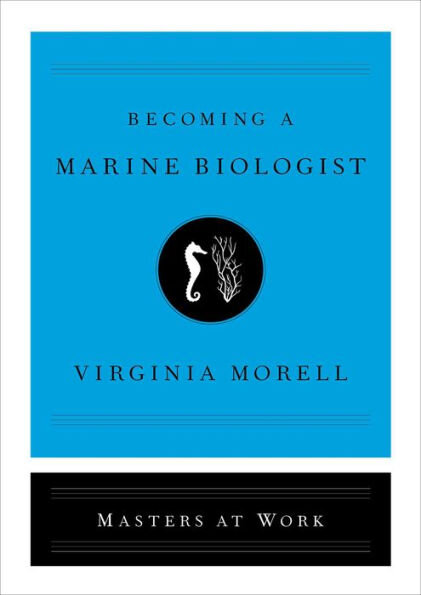
Becoming a Marine Biologist (Masters at Work)
Virginia Morell | Simon & Schuster 2019
A fascinating guide to a career in marine biology written by bestselling journalist Virginia Morell and based on the real-life experiences of an expert in the field—essential reading for someone considering a path to this profession.
For the last two decades, Dr. Robin Baird has spent two months out of each year aboard a twenty-four-foot Zodiac boat in the waters off the big island of Hawai'i, researching the twenty-five species of whales and dolphins that live in the Pacific Ocean. His life may seem an impossible dream—but his career path from being the first person in his family to graduate college to becoming the leading expert on some of Hawai'i's marine mammals was full of twists and turns.
Join Baird aboard his Zodiac for a candid look at the realities of life as a research scientist, from the ever-present struggles to secure grants and publish new data, to the joys of helping to protect the ocean and its inhabitants. You’ll also learn pro tips, like the unexpected upsides to not majoring in marine biology and the usefulness of hobbies like sailing, birdwatching, photography, and archery. (You’ll need good aim to tag animals with the tiny recording devices that track their movements.)
Becoming a Marine Biologist is an essential guide for anyone looking to turn a passion for the natural world into a career. This is the most valuable informational interview you’ll have—required reading for anyone considering this challenging yet rewarding path.
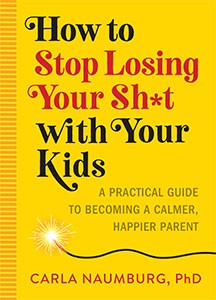
How to Stop Losing Your Sh*t With Your Kids
Carla Naumburg | Workman 2019
Stop the yelling, lose the guilt, and become a calmer, happier parent.
Drawing on evidence-based practices, here is an insight-packed and tip-filled plan for how to stop the parental meltdowns. Its compassionate, pragmatic approach will help readers feel less ashamed and more empowered to get their, ahem, act together instead of losing it.
“Using a powerful combination of humor and reality checks, Naumburg helps parents unpack their unique stressors (we all have them) and find ways to stay calm even the most frustrating of family moments.” —Katie Hurley, LCSW, author of No More Mean Girls and The Happy Kid Handbook
“By the end not only are you laughing out loud, but you’ve gained a sense of self-compassion and a concrete action plan.”—Rebecca Schrag Hershberg, PhD, author of The Tantrum Survival Guide
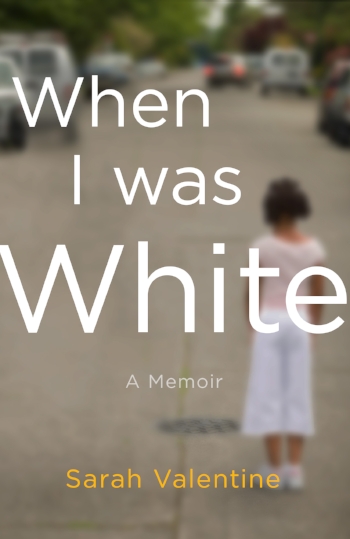
When I Was White
Sarah Valentine | St. Martin’s Press, 2019
The stunning and provocative coming-of-age memoir about Sarah Valentine's childhood as a white girl in the suburbs of Pittsburgh, and her discovery that her father was a black man.
At the age of 27, Sarah Valentine discovered that she was not, in fact, the white girl she had always believed herself to be. She learned the truth of her paternity: that her father was a black man. And she learned the truth about her own identity: mixed race.
And so Sarah began the difficult and absorbing journey of changing her identity from white to black. In this memoir, Sarah details the story of the discovery of her identity, how she overcame depression to come to terms with this identity, and, perhaps most importantly, asks: why? Her entire family and community had conspired to maintain her white identity. The supreme discomfort her white family and community felt about addressing issues of race–her race–is a microcosm of race relationships in America.
A black woman who lived her formative years identifying as white, Sarah's story is a kind of Rachel Dolezal in reverse, though her "passing" was less intentional than conspiracy. This memoir is an examination of the cost of being black in America, and how one woman threw off the racial identity she'd grown up with, in order to embrace a new one.
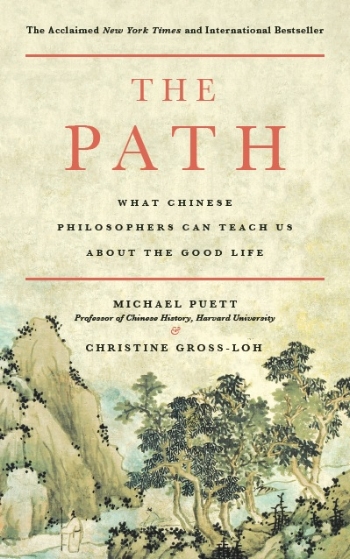
The Path
Michael Puett & Christine Gross-Loh | Simon & Schuster 2016
New York Times and International Bestseller
For the first time, an award-winning Harvard professor shares his wildly popular course on classical Chinese philosophy, showing you how ancient ideas—like the fallacy of the authentic self—can guide you on the path to a good life today.
Why is a course on ancient Chinese philosophers one of the most popular at Harvard? Because it challenges all our modern assumptions about what it takes to flourish.
Astonishing teachings emerged two thousand years ago through the work of a succession of Chinese scholars exploring how humans can improve themselves and their society. And what are these counterintuitive ideas? Transformation comes not from looking within for a true self, but from creating conditions that produce new possibilities. Good relationships come not from being sincere and authentic, but from the rituals we perform within them. A good life emerges not from planning it out, but through training ourselves to respond well to small moments. Influence comes not from wielding power but from holding back. Excellence comes from what we choose to do, not our natural abilities.
In other words, The Path “opens the mind” (Huffington Post) and upends everything we are told about how to lead a good life. Its most radical idea is that there is no path to follow in the first place—just a journey we create anew at every moment by seeing and doing things differently. “With its…spirited, convincing vision, revolutionary new insights can be gleaned from this book on how to approach life’s multifarious situations with both heart and head” (Kirkus Reviews).
A note from the publisher: To read relevant passages from the original works of Chinese philosophy, see our ebook Confucius, Mencius, Laozi, Zhuangzi, Xunzi: Selected Passages, available wherever books are sold.
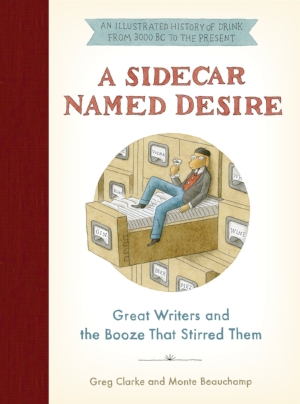
A Sidecar Named Desire
Greg Clarke and Monte Beauchamp | Dey Street 2018
A rollicking illustrated history of alcohol and its literary imbibers, from Jane Austen’s beer brewing to James Joyce’s passion for Guinness to E.B. White’s cure for writers’ block—a dry martini—by celebrated illustrator Greg Clarke and award-winning editor/art director Monte Beauchamp.
"Civilization begins with distillation."—William Faulkner
"Bourbon does for me what the piece of cake did for Proust."—Walker Percy
"God has a brown voice, full and soft as beer."—Anne Sexton
Throughout history, there has been no greater catalyst for creativity among writers—so they claim—than a good, stiff drink. From Aristophanes’ attraction to wine, to Dostoevsky’s breakfast of grain vodka and brown bread, to Joan Didion’s fondness for gin, stories abound of how booze has fueled and inspired our literary icons.
In this graphic volume, cartoonist Greg Clarke and comics anthologist Monte Beauchamp take us on an unforgettable literary bar crawl. A Sidecar Named Desire is packed with historical factoids, anecdotes, booze trivia, and fascinating detours into the lives of our most storied literary personalities—along with literary-themed cocktail recipes such as Ernest Hemingway’s Death in the Afternoon and Philip Larkin’s Gin and Tonic set to verse.
For the literary-minded drinker—whether wine, gin, vodka, beer, whiskey, or tequila is your elixir of choice—A Sidecar Named Desire will whet your appetite. Bottoms up!
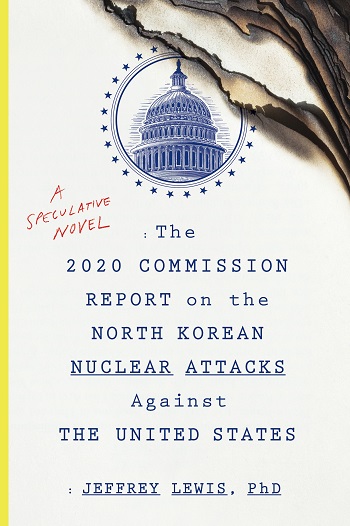
The 2020 Commission Report
Jeffrey Lewis | HMH 2018
“A brilliantly conceived page-turner.”—Eric Schlosser, author of Fast Food Nation and Command and Control
America lost 1.4 million citizens in the North Korean attacks of March 2020. This is the final, authorized report of the government commission charged with investigating the calamity.
“The skies over the Korean Peninsula on March 21, 2020, were clear and blue.” So begins this sobering report on the findings of the Commission on the Nuclear Attacks against the United States, established by law by Congress and President Donald J. Trump to investigate the horrific events of the next three days. An independent, bipartisan panel led by nuclear expert Jeffrey Lewis, the commission was charged with finding and reporting the relevant facts, investigating how the nuclear war began, and determining whether our government was adequately prepared for combating a nuclear adversary and safeguarding U.S. citizens. Did President Trump and his advisers understand North Korean views about nuclear weapons? Did they appreciate the dangers of provoking the country’s ruler with social media posts and military exercises? Did the tragic milestones of that fateful month—North Korea's accidental shoot-down of Air Busan flight 411, the retaliatory strike by South Korea, and the tweet that triggered vastly more carnage—inevitably lead to war? Or did America’s leaders have the opportunity to avert the greatest calamity in the history of our nation?
Answering these questions will not bring back the lives lost in March 2020. It will not rebuild New York, Washington, or the other cities reduced to rubble. But at the very least, it might prevent a tragedy of this magnitude from occurring again. It is this hope, more than any other, that inspired The 2020 Commission Report.
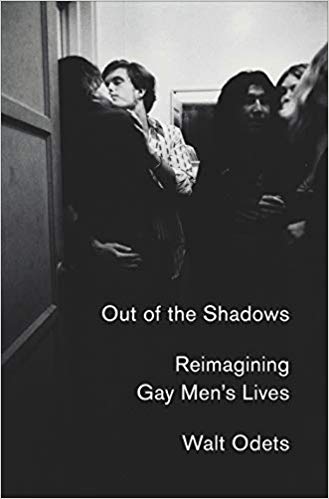
Out of the Shadows
Walt Odets | Farrar, Straus and Giroux 2019
A moving exploration of how gay men construct their identities, fight to be themselves, and live authentically
It goes without saying that even today, it’s not easy to be gay in America. While young gay men often come out more readily, even those from the most progressive of backgrounds still struggle with the legacy of early-life stigma and a deficit of self-acceptance, which can fuel doubt, regret, and, at worst, self-loathing. And this is to say nothing of the ongoing trauma wrought by AIDS, which is all too often relegated to history. Drawing on his work as a clinical psychologist during and in the aftermath of the epidemic, Walt Odets reflects on what it means to survive and figure out a way to live in a new, uncompromising future, both for the men who endured the upheaval of those years and for the younger men who have come of age since then, at a time when an HIV epidemic is still ravaging the gay community, especially among the most marginalized.
Through moving stories―of friends and patients, and his own―Odets considers how experiences early in life launch men on trajectories aimed at futures that are not authentically theirs. He writes to help reconstruct how we think about gay life by considering everything from the misleading idea of “the homosexual,” to the diversity and richness of gay relationships, to the historical role of stigma and shame and the significance of youth and of aging. Crawling out from under the trauma of destructive early-life experience and the two epidemics, and into a century of shifting social values, provides an opportunity to explore possibilities rather than live with limitations imposed by others. Though it is drawn from decades of private practice, activism, and life in the gay community, Odets’s work achieves remarkable universality. At its core, Out of the Shadows is driven by his belief that it is time that we act based on who we are and not who others are or who they would want us to be. We―particularly the young―must construct our own paths through life. Out of the Shadows is a necessary, impassioned argument for how and why we must all take hold of our futures.

Insane
Alisa Roth | Basic Books 2018
An urgent exposé of the mental health crisis in our courts, jails, and prisons
America has made mental illness a crime. Jails in New York, Los Angeles, and Chicago each house more people with mental illnesses than any hospital. As many as half of all people in America's jails and prisons have a psychiatric disorder. One in four fatal police shootings involves a person with such disorders.
In this revelatory book, journalist Alisa Roth goes deep inside the criminal justice system to show how and why it has become a warehouse where inmates are denied proper treatment, abused, and punished in ways that make them sicker.
Through intimate stories of people in the system and those trying to fix it, Roth reveals the hidden forces behind this crisis and suggests how a fairer and more humane approach might look. Insane is a galvanizing wake-up call for criminal justice reformers and anyone concerned about the plight of our most vulnerable.
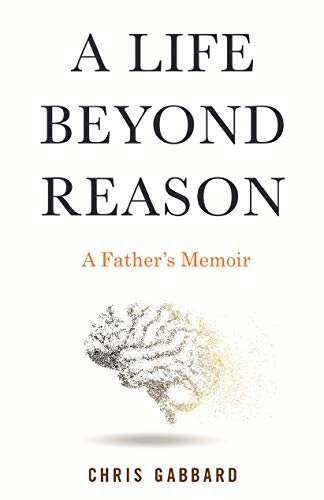
A Life Beyond Reason: A Disabled Boy and His Fathers Enlightenment
Chris Gabbard | Beacon Press 2019
An unflinching and luminous memoir that explores a father’s philosophical transformation when he must reconsider the questions what makes us human? and whose life is worth living?
Before becoming a father, Chris Gabbard was a fast-track academic finishing his doctoral dissertation at Stanford. A disciple of Enlightenment thinkers, he was a devotee of reason, believed in the reliability of science, and lived by the dictum that an unexamined life is not worth living. That is, until his son August was born.
Despite his faith that modern medicine would not fail him, August was born with a severe traumatic brain injury as a likely result of medical error and lived as a spastic quadriplegic who was cortically blind, profoundly cognitively impaired, and nonverbal. While Gabbard tried to uncover what went wrong during the birth and adjusted to his new role raising a child with multiple disabilities, he began to rethink his commitment to Enlightenment thinkers—who would have concluded that his son was doomed to a life of suffering. But August was a happy child who brought joy to just about everyone he met in his 14 years of life—and opened up Gabbard’s capacity to love. Ultimately, he comes to understand that his son is undeniably a person deserving of life.
A Life Beyond Reason will challenge readers to reexamine their beliefs about who is deserving of humanity.

Nature by Design
Stephen Kellert | Yale University Press 2018
Biophilia is the theory that people possess an inherent affinity for nature, which developed during the long course of human evolution. In recent years, studies have revealed that this inclination continues to be a vital component to human health and wellbeing. Given the pace and scale of construction today with its adversarial, dominative relationship with nature, the integration of nature with the built environment is one of the greatest challenges of our time.
In this sweeping examination, Stephen Kellert describes the basic principles, practices, and options for successfully implementing biophilic design. He shows us what is—and isn’t—good biophilic design using examples of workplaces, healthcare facilities, schools, commercial centers, religious structures, and hospitality settings. This book will to appeal to architects, designers, engineers, scholars of human evolutionary biology, and—with more than one hundred striking images of designs—anyone interested in nature‑inspired spaces.
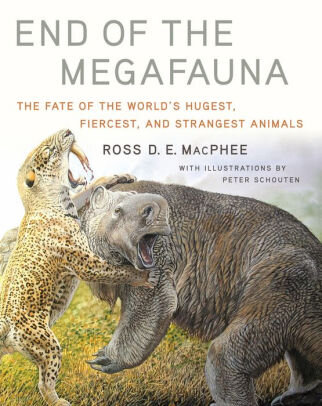
End of the Megafauna
Ross MacPhee | W. W. Norton & Company 2018
The fascinating lives and puzzling demise of some of the largest animals on earth.
Until a few thousand years ago, creatures that could have been from a sci-fi thriller―including gorilla-sized lemurs, 500-pound birds, and crocodiles that weighed a ton or more―roamed the earth. These great beasts, or “megafauna,” lived on every habitable continent and on many islands. With a handful of exceptions, all are now gone.
What caused the disappearance of these prehistoric behemoths? No one event can be pinpointed as a specific cause, but several factors may have played a role. Paleomammalogist Ross D. E. MacPhee explores them all, examining the leading extinction theories, weighing the evidence, and presenting his own conclusions. He shows how theories of human overhunting and catastrophic climate change fail to account for critical features of these extinctions, and how new thinking is needed to elucidate these mysterious losses.
Along the way, we learn how time is determined in earth history; how DNA is used to explain the genomics and phylogenetic history of megafauna―and how synthetic biology and genetic engineering may be able to reintroduce these giants of the past. Until then, gorgeous four-color illustrations by Peter Schouten re-create these megabeasts here in vivid detail.
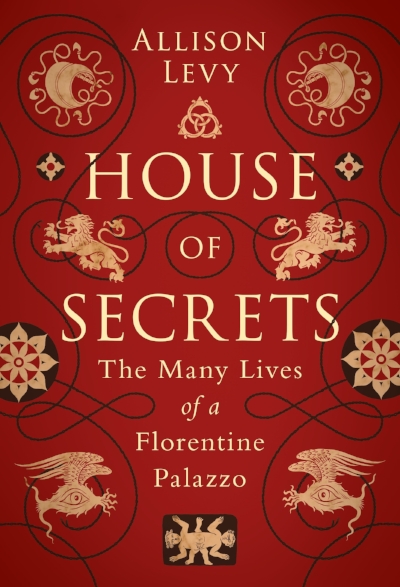
House of Secrets
Allison Levy | I. B. Taurus, 2019
This book tells the remarkable story of Palazzo Rucellai from behind its celebrated façade. The house, beginning with its piecemeal assemblage by one of the richest men in Florence in the fifteenth century, has witnessed endless drama, from the butchering of its interior to a courtyard suicide to champagne-fueled orgies on the eve of World War I to a recent murder on its third floor. When the author, an art historian, serendipitously discovers a room for let in the house, she lands in the vortex of history and is tested at every turn―inside the house and out. Her residency in Palazzo Rucellai is informed as much by the sense of desire giving way to disappointment as by a sense of denial that soon enough must succumb to truth. House of Secrets is about the sharing of space, the tracing of footsteps, the overlapping of lives. It is about the willingness to lose oneself behind the façade, to live between past and present, to slip between the cracks of history and the crevices of our own imagination.
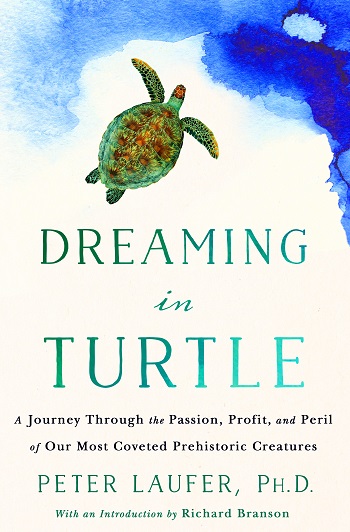
Dreaming in Turtle
Peter Laufer | Thomas Dunne Books 2018
In the vein of Sy Montgomery and Elizabeth Kolbert comes a fascinating exploration into the world of turtles across the globe; Laufer charts the lore, love, and peril to a beloved species.
Dreaming in Turtle is a compelling story of a stalwart animal prized from prehistory through to today―an animal threatened by human greed, pragmatism, and rationalization. It stars turtles and shady and heroic human characters both, in settings ranging from luxury redoubts to degraded habitats, during a time when the confluence of easy global trade, limited supply, and inexhaustible demand has accelerated the stress on species. The growth of the middle class in high-population regions like China, where the turtle is particularly valued, feeds this perfect storm into which the turtle finds itself lashed. This is a tale not just of endangered turtles but also one of overall human failings, frailties, and vulnerabilities―all punctuated by optimistic hope for change fueled by dedicated turtle champions.
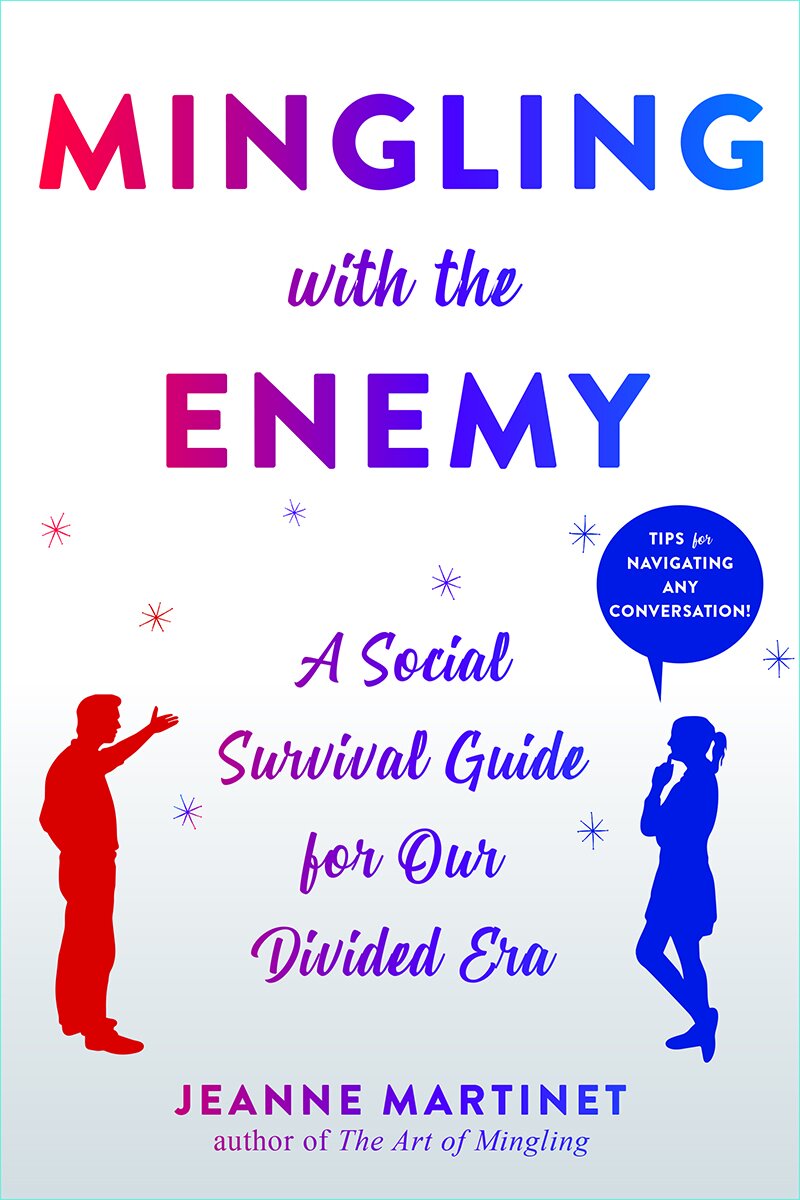
Mingling with the Enemy
Jeanne Martinet | New Harbinger 2020
From the bestselling author of The Art of Mingling, an entertaining and essential how-to for navigating conversational minefields—without getting blown up.
We are living in a new social era: The Powder Keg Era. These days almost every subject leads straight to politics, and the conversation goes straight to hell. In a nation that is completely polarized, with most of us continually pummeled by social media and the 24/7 news cycle, our social lives are taking a hit.
It can happen anywhere: at an office party, birthday bash, wedding reception, the local cafe, the gym, or just while talking with strangers in line for the movies. Suddenly, what began as a perfectly innocent chat about chocolate cake takes a bad turn, and you find yourself in an ugly argument about genetically altered foods. Every day the tensions among us seem to be rising; the ever-widening ideological chasm is hurting our ability to communicate. So, how can we re-learn how to converse with people who are on the “other side”—without anyone getting hurt?
With an insightful and down-to-earth sensibility, bestselling author Jeanne Martinet offers a practical and encouraging guide to navigating conversations in our current social climate. She illustrates easy-to-learn techniques and strategies to help you: keep your mind open, know your own triggers, pick the best topics, change course to avoid disaster, be an active listener, master the ability to yield without losing, employ humor and storytelling to ease tension, go undercover when necessary, be a brilliant subject changer, find common ground, and escape gracefully.
We have to keep talking to each other at all costs. Social interaction is a positive force that we need in order to thrive, individually and as a society, especially in today’s fractured world. Learning to mingle with the “enemy” is about figuring out how to have conversations with people that may make us afraid or angry. It’s about recognizing the presumptions—even prejudices—we all have when coming into contact with certain people.
With the ultimate goal of teaching us how to connect with each other more fully, Mingling with the Enemy provides a road map for successfully traversing any and all hostile territories, and coming out a winner.
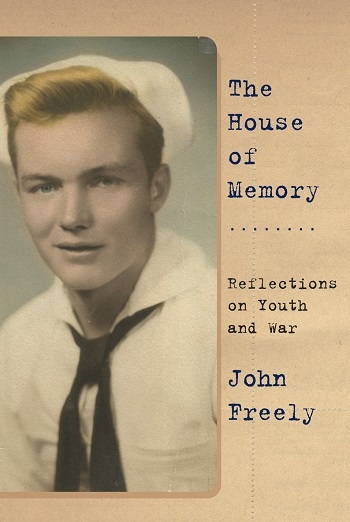
The House of Memory
John Freely | Knopf 2017
An engaging, funny, and tender memoir from a man of ninety years: of growing up poor in a Brooklyn and Ireland that now exist only in memory, and of serving in the China/Burma/India theater during World War II as a member of an elite U.S. Navy commando unit
John Freely's voice is still astonishingly youthful, full of wonder, humor, and gratitude, as he remembers his fully lived life. Born in Brooklyn to Irish immigrants, he went to Ireland with his mother when he was five, where he spent his young childhood on his grandfather's farm. Western Ireland was impoverished by the times, but rich in beauty and intriguing people, and it opened in him a lifelong desire to see the world and its inhabitants. When he was seven, he returned to Brooklyn, and the antics of a coming-of-age boy played out on streets filled with character and characters. He took whatever jobs he could when times got tough, always shaking off his losses and moving on, hungry to see and experience what was next. He joined the U.S. Navy at seventeen to "see the world," and did just that. In wartime, while bringing supplies and ammunition over the Stilwell-Burma Road to Chiang Kai-shek's Chinese guerrilla forces, Freely served alongside them during the last weeks of World War II in the Tibetan borderlands of China, a Shangri-la that war had turned into hell on earth.
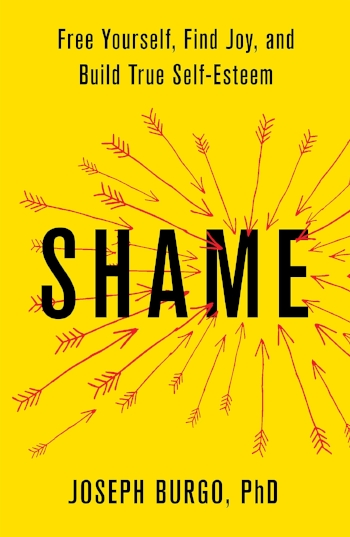
Shame
Joe Burgo | St. Martin's Press 2018
An intimate look at the full spectrum of shame―often masked by addiction, promiscuity, perfectionism, self-loathing, or narcissism―that offers a new, positive route forward
Encounters with embarrassment, guilt, self-consciousness, remorse, etc. are an unavoidable part of everyday life, and they sometimes have lessons to teach us―about our goals and values, about the person we expect ourselves to be. In contrast to the prevailing cultural view of shame as a uniformly toxic influence, Shame is a book that approaches the subject of shame as an entire family of emotions which share a “painful awareness of self.”
Challenging widely-accepted views within the self-esteem movement, Shame argues that self-esteem does NOT thrive in the soil of non-stop praise and encouragement, but rather depends upon setting and meeting goals, living up to the expectations we hold for ourselves, and finally sharing our joy in achievement with the people who matter most to us. Along the way, listening to and learning from our encounters with shame will go further than affirmations and positive self-talk in helping us to build authentic self-esteem.
Richly illustrated with clinical stories from the author’s 35 years in private practice, Shame also describes the myriad ways that unacknowledged shame often hides behind a broad spectrum of mental disorders including social anxiety, narcissism, addiction, and masochism.
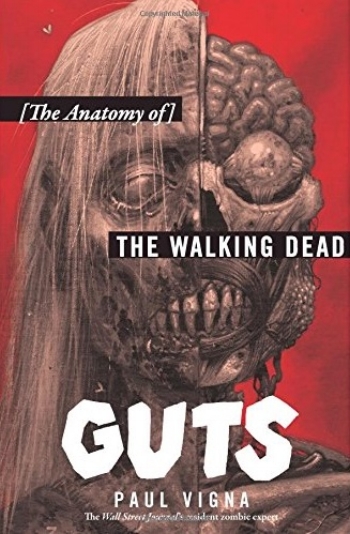
Guts
Paul Vigna | Dey Street 2017
In this first and only guide to AMC’s exceptional hit series The Walking Dead, the Wall Street Journal’s Walking Dead columnist celebrates the show, its storylines, characters, and development, and examines its popularity and cultural resonance.
From its first episode, The Walking Dead took fans in the United States and across the world by storm, becoming the highest-rated series in the history of cable television. After each episode airs, Paul Vigna writes a widely read column in which he breaks down the stories and considers what works and what doesn’t, and tries to discern the small details that will become larger plot points.
So how did a basic cable television show based on Robert Kirkman's graphic comic series, set in an apocalyptic dog-eat-dog world filled with flesh-eating zombies and even scarier human beings, become a ratings juggernaut and cultural phenomenon? Why is the show such a massive hit? In this playful yet comprehensive guide, Vigna dissect every aspect of The Walking Dead to assess its extraordinary success.
In the vein of Seinfeldia,Vigna digs into the show’s guts, exploring its roots, storyline, relevance for fans and the wider popular culture, and more. He explores how the changing nature of television and media have contributed to the show’s success, and goes deep into the zombie genre, delineating why it’s different from vampires, werewolves, and other monsters. He considers why people have found in zombies a mirror for their own fears, and explains how this connection is important to the show’s popularity. He interviews the cast and crew, who share behind-the-scenes tales, and introduces a cross-section of its diverse and rabid viewership, from fantasy nerds to NFL stars. Guts is a must have for every Walking Dead fan.
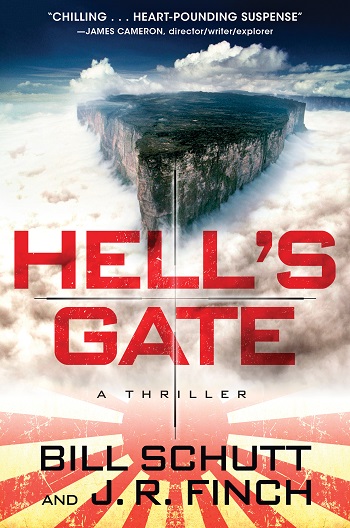
Hell's Gate
Bill Schutt & J. R. Finch | William Morrow 2016
“Will haunt you long after you put the book down.” — James Cameron, director/writer/explorer
“Terrific.” —Steve Berry, New York Times bestselling author of The 14th Colony
1944. As war rages across Europe and the Pacific, Army intel makes a shocking discovery: a three-hundred-foot Japanese submarine marooned and empty, deep in the Brazilian interior. A team of Army Rangers sent to investigate has gone missing and the military sends Captain R. J. MacCready to learn why the Japanese are there—and what they’re planning.
Parachuting into a mist-shrouded valley beneath a two thousand foot plateau, Mac is unexpectedly reunited with fellow scientist and friend Bob Thorne, presumed dead for years. Thorne, a botanist, lives with Yanni, an indigenous woman who possesses mysterious, invaluable skills. Their wisdom and expertise will prove lifesaving for Mac as he sets out into the unknown.
Soon, Mac learns of a diabolical Axis plot to destroy the United States and its allies. But there’s an even darker force on the prowl, attacking at night and targeting both man and beast. Mac has to uncover the source of this emerging biological crisis and foil the enemy’s plans . . . but will he be in time to save humanity from itself?
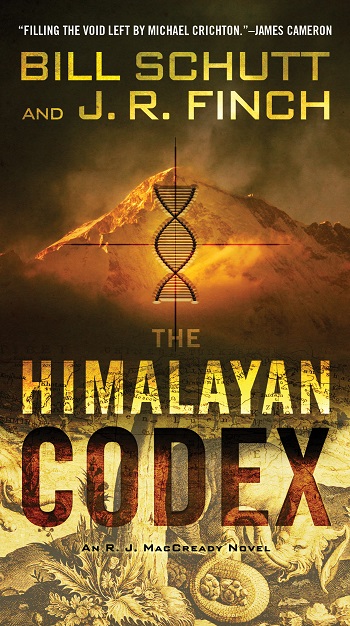
The Himalayan Codex
Bill Schutt & J. R. Finch | William Morrow 2017
“Bill Schutt and J. R. Finch are two of the best adventure writers to hit the scene in a long time!” —Clive Cussler, #1 New York Times bestselling author
It is 1946, and the world is rebuilding itself from the war’s devastating ashes. R. J. MacCready is headed for the Himalayas to examine some recently discovered mammoth bones—a mission that may help him put the loss of his friend and colleague Bob Thorne behind him.
Arriving in Asia with the bright and fearless Yanni Thorne, his friend’s widow and now his invaluable assistant, Mac learns the bones are only a cover story. He’s actually been sent there to investigate an ancient codex allegedly written by Pliny the Elder, a fascinating text filled with revelatory secrets. The Roman naturalist claimed to have discovered a new race of humans, a divergent species that inspired the myths of the Yeti and is rumored to have the ability to accelerate the process of evolution. If Pliny’s assertions are true, this seemingly supernatural ability holds unlimited potential benefits—and unlimited potential for destruction.
Charged with uncovering more about this miracle species, Mac sets off into the remote mountain valleys of Tibet, known to the locals as the Labyrinth, using the codex as his guide. As he plunges deeper into the unknown, the more certain it appears that Mac and the associates who join his odyssey may not make it out alive.
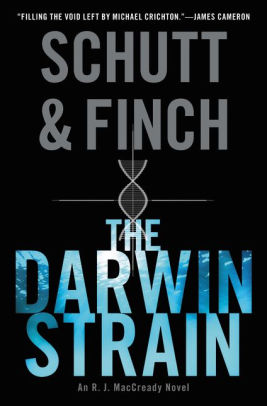
THE DARWIN STRAIN
Bill Schutt & J.R. Finch | William Morrow 2019
The authors of Hell’s Gate and The Himalayan Codex deliver their third high-octane thriller—a page-turning blend of science, history, and suspense featuring zoologist and adventurer Captain R. J. MacCready.
“Looks like Schutt and Finch are filling the void left by the passing of Michael Crichton.”—James Cameron, director/writer/explorer
Though the fighting has stopped and Hitler is vanquished, a dangerous new war between America and the Soviet Union has begun. Invaluable in defeating the Nazis, accidental crypto-zoologist R. J. MacCready and Yanni Thorne, an indigenous Brazilian and expert in animal behavior, are working for the Pentagon once again. Sent to a mysterious Greek island in a remote corner of the Mediterranean, they are investigating rumors about a volcanic spring with “miraculous” healing properties that the locals say is guarded by sea monsters from ancient legends.
The islanders believe that, like Fatima, the spring is a gift from God. To the Greek Orthodox Church, it is a sign of a deadly evil foretold in apocalyptic texts. Alongside French and Chinese researchers—men who share their strange, blood-stained past—Mac and Yanni discover that the volcanic spring’s undersea plumes release an exotic microbe that can transform life with astonishing speed.
To find the source of the Volcanic spring, Mac and Yanni must find a way to neutralize “the Dragons of Revelation”—a fearsome aquatic species also known as “Kraken,” which are preventing the scientists from exploring deep beneath the sea’s surface. Mutating at an astonishing pace, the Kraken have evolved into a chillingly high alien intelligence. As the race to possess the “miracle” microbe heats up, tensions between geopolitics, religion, and ordinary scientists confronted with the unknown escalate into chaos. Mac and Yanni know all too well that one wrong choice can easily set in motion a biological chain reaction that will reach across the decades to enhance—or destroy—everything that lives.
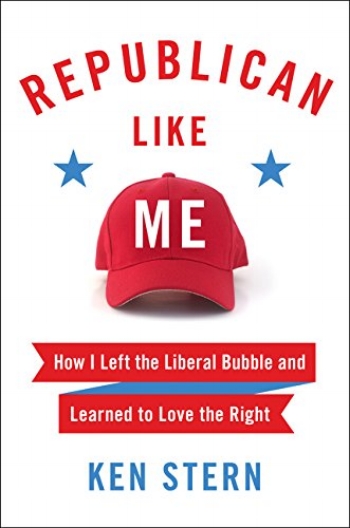
Republican Like Me
Ken Stern | Harper 2017
In this controversial National Bestseller, the former CEO of NPR sets out for conservative America wondering why these people are so wrong about everything. It turns out, they aren’t.
Ken Stern watched the increasing polarization of our country with growing concern. As a longtime partisan Democrat himself, he felt forced to acknowledge that his own views were too parochial, too absent of any exposure to the “other side.” In fact, his urban neighborhood is so liberal, he couldn’t find a single Republican--even by asking around.
So for one year, he crossed the aisle to spend time listening, talking, and praying with Republicans of all stripes. With his mind open and his dial tuned to the right, he went to evangelical churches, shot a hog in Texas, stood in pit row at a NASCAR race, hung out at Tea Party meetings and sat in on Steve Bannon’s radio show. He also read up on conservative wonkery and consulted with the smartest people the right has to offer.
What happens when a liberal sets out to look at issues from a conservative perspective? Some of his dearly cherished assumptions about the right slipped away. Republican Like Me reveals what lead him to change his mind, and his view of an increasingly polarized America.
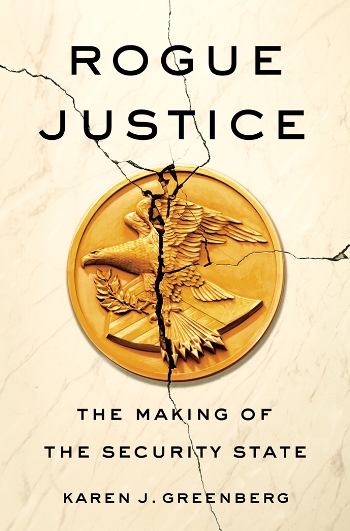
Rogue Justice
Karen J. Greenberg | Crown 2016
Kirkus Best Books of 2016
The definitive account of how America’s War on Terror sparked a decade-long assault on the rule of law, weakening our courts and our Constitution in the name of national security.
The day after September 11, President Bush tasked the attorney general with preventing another terrorist attack on the United States. From that day forward, the Bush administration turned to the Department of Justice to give its imprimatur to activities that had previously been unthinkable—from the NSA’s spying on US citizens to indefinite detention to torture. Many of these activities were secretly authorized, others done in the light of day.
When President Obama took office, many observers expected a reversal of these encroachments upon civil liberties and justice, but the new administration found the rogue policies to be deeply entrenched and, at times, worth preserving. Obama ramped up targeted killings, held fast to aggressive surveillance policies, and fell short on bringing reform to detention and interrogation.
How did America veer so far from its founding principles of justice? Rogue Justice connects the dots for the first time—from the Patriot Act to today’s military commissions, from terrorism prosecutions to intelligence priorities, from the ACLU’s activism to Edward Snowden’s revelations. And it poses a stark question: Will the American justice system ever recover from the compromises it made for the war on terror?
Riveting and deeply reported, Rogue Justice could only have been written by Karen Greenberg, one of this country’s top experts on Guantánamo, torture, and terrorism, with a deep knowledge of both the Bush and Obama administrations. Now she brings to life the full story of law and policy after 9/11, introducing us to the key players and events, showing that time and again, when liberty and security have clashed, justice has been the victim.
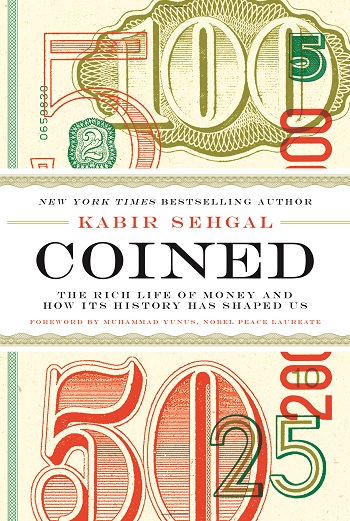
Coined
Kabir Sehgal | Grand Central 2015
A New York Times and Wall Street Journal Bestseller
The importance of money in our lives is readily apparent to everyone--rich, poor, and in between. However grudgingly, most of us accept the expression "Money makes the world go round" as a universal truth. We are all aware of the power of money--how it influences our moods, compels us to take risks, and serves as the yardstick of success in societies around the world. Yet because we take the daily reality of money so completely for granted, we seldom question how and why it has come to play such a central role in our lives.
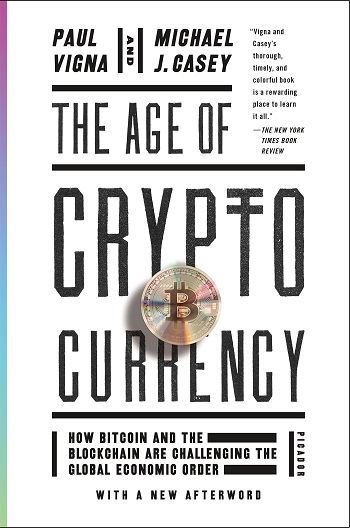
The Age of Cryptocurrency
Michael J. Casey & Paul Vigna | St. Martin's 2015
Bitcoin became a buzzword overnight. A cyber-enigma with an enthusiastic following, it pops up in headlines and fuels endless media debate. You can apparently use it to buy anything from coffee to cars, yet few people seem to truly understand what it is. This raises the question: Why should anyone care about bitcoin?
In The Age of Cryptocurrency, Wall Street journalists Paul Vigna and Michael J. Casey deliver the definitive answer to this question. Cybermoney is poised to launch a revolution, one that could reinvent traditional financial and social structures while bringing the world's billions of "unbanked" individuals into a new global economy. Cryptocurrency holds the promise of a financial system without a middleman, one owned by the people who use it and one safeguarded from the devastation of a 2008-type crash.
But bitcoin, the most famous of the cybermonies, carries a reputation for instability, wild fluctuation, and illicit business; some fear it has the power to eliminate jobs and to upend the concept of a nation-state. It implies, above all, monumental and wide-reaching change―for better and for worse. But it is here to stay, and you ignore it at your peril.
Vigna and Casey demystify cryptocurrency―its origins, its function, and what you need to know to navigate a cyber-economy. The digital currency world will look very different from the paper currency world; The Age of Cryptocurrency will teach you how to be ready.
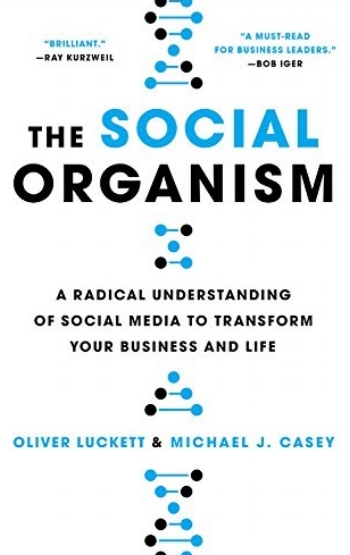
The Social Organism
Oliver Luckett & Michael J. Casey | Hachette Books 2016
From tech visionaries Oliver Luckett and Michael J. Casey, a groundbreaking, must-read theory of social media—how it works, how it's changing human life, and how we can master it for good and for profit.
In barely a decade, social media has positioned itself at the center of twenty-first century life. The combined power of platforms like Facebook, Twitter, Instagram, Snapchat, and Vine have helped topple dictators and turned anonymous teenagers into celebrities overnight. In the social media age, ideas spread and morph through shared hashtags, photos, and videos, and the most compelling and emotive ones can transform public opinion in mere days and weeks, even attitudes and priorities that had persisted for decades.
How did this happen? The scope and pace of these changes have left traditional businesses—and their old-guard marketing gatekeepers—bewildered. We simply do not comprehend social media's form, function, and possibilities. It's time we did.
In The Social Organism, Luckett and Casey offer a revolutionary theory: social networks—to an astonishing degree—mimic the rules and functions of biological life. In sharing and replicating packets of information known as memes, the world's social media users are facilitating an evolutionary process just like the transfer of genetic information in living things. Memes are the basic building blocks of our culture, our social DNA. To master social media—and to make online content that impacts the world—you must start with the Social Organism.
With the scope and ambition of The Second Machine Age and James Gleick's The Information, The Social Organism is an indispensable guide for business leaders, marketing professionals, and anyone serious about understanding our digital world—a guide not just to social media, but to human life today and where it is headed next.
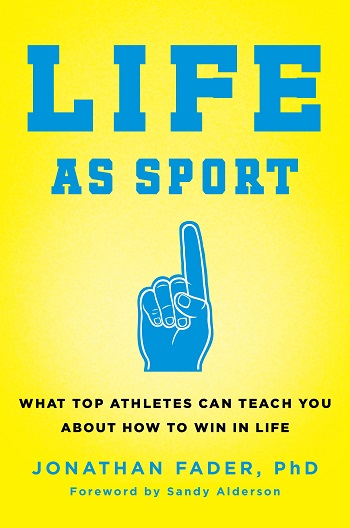
Life as Sport
Dr. Jonathan Fader | Da Capo 2016
Why do sports captivate people? They allow us to watch human beings achieve peak performance, but, beyond physical strength and skill, what's really impressive is an athlete's mental prowess—their will to succeed, engagement with their environment, and self-confidence.
In Life as Sport, sport psychologist Dr. Jonathan Fader shares the skills that he teaches professional athletes—to enhance motivation, set productive goals, sharpen routines, manage stress, and clarify thought processes—and applies them to real-world situations. Dr. Fader's book is the product of thousands of hours of conversations with athletes from various teams and sports: power forwards, tennis phenoms, power-hitting outfielders, and battle-scarred linebackers, as well as hedge-fund managers, entrepreneurs, A-list actors, and dozens of other elite achievers in sports, business, and performing arts. It offers a compendium of stories, theories, and techniques that have been helpful to players, coaches, and executives in professional sports. What emerges is more than just a set of techniques, but a life philosophy that anyone can live by: an internal code to help translate our talent and drive toward the highest plateaus of performance.
Dr. Fader designs his strategies to be studied, learned, practiced, and improved. He offers his readers the same exercises that he uses in every session with a professional athlete. These exercises help you to get truly engaged, whether you are designing a new business plan, working to inspire a team or individual, or even falling in love. This is what it means to truly live life as sport—to approach it with the same immediacy, wonder, and engagement that athletes feel at their peak during a game. Life as Sport helps you to pursue your own goals with an enriched intensity—not only because it creates new potential, but also because it helps you unlock what was always there to begin with.
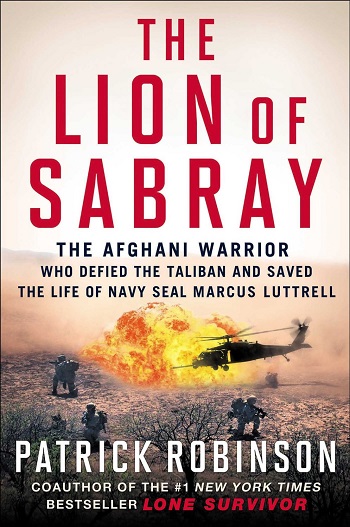
The Lion of Sabray
Patrick Robinson | Touchstone 2015
Patrick Robinson, coauthor of the #1 New York Times bestseller Lone Survivor and “preeminent writer of modern naval fiction” (The Florida Times Union) shares the gripping untold story of Mohammed Gulab, the Afghani warrior who defied the Taliban and saved the life of American hero and Navy SEAL Marcus Luttrell.
Bestselling author Patrick Robinson helped Marcus Luttrell bring his harrowing story of survival to the page and the big screen with Lone Survivor. But the Afghani man who saved his life was always shrouded in mystery. Now, with The Lion of Sabray, Robinson reveals the amazing backstory of Mohammed Gulab—the brave man who forever changed the course of life for his Afghani family, his village, and himself when he discovered Luttrell badly injured and barely conscious on a mountainside in the Hindu Kush just hours after the firefight that killed the rest of Luttrell’s team.
Operating under the 2,000-year-old principles of Pashtunwali—the tribal honor code that guided his life—Gulab refused to turn Luttrell over to the Taliban forces that were hunting him, believing it was his obligation to protect and care for the American soldier. Because Gulab was a celebrated Mujahedeen field commander and machine-gunner who beat back the Soviets as a teenager, the Taliban were wary enough that they didn’t simply storm the village and take Luttrell, which gave Gulab time to orchestrate his rescue.
In addition to Gulab’s brave story, The Lion of Sabray cinematically reveals previously unknown details of Luttrell’s rescue by American forces—which were only recently declassified—and sheds light on the ramifications for Gulab, his family, and his community. Going beyond both the book and the movie versions of Lone Survivor, The Lion of Sabray is a must-read for anyone who wants to know more about the brave man who helped the Lone Survivor make it home.
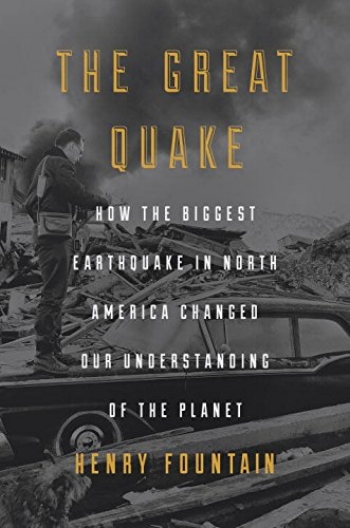
The Great Quake
Henry Fountain | Crown 2017
New York Times Book Review Editors' Choice
In the bestselling tradition of Erik Larson’s Isaac’s Storm, The Great Quake is a riveting narrative about the biggest earthquake in North American recorded history—the 1964 Alaska earthquake that demolished the city of Valdez and swept away the island village of Chenega—and the geologist who hunted for clues to explain how and why it took place.
At 5:36 p.m. on March 27, 1964, a magnitude 9.2. earthquake—the second most powerful in world history—struck the young state of Alaska. The violent shaking, followed by massive tsunamis, devastated the southern half of the state and killed more than 130 people. A day later, George Plafker, a geologist with the U.S. Geological Survey, arrived to investigate. His fascinating scientific detective work in the months that followed helped confirm the then-controversial theory of plate tectonics.
In a compelling tale about the almost unimaginable brute force of nature, New York Times science journalist Henry Fountain combines history and science to bring the quake and its aftermath to life in vivid detail. With deep, on-the-ground reporting from Alaska, often in the company of George Plafker, Fountain shows how the earthquake left its mark on the land and its people—and on science.
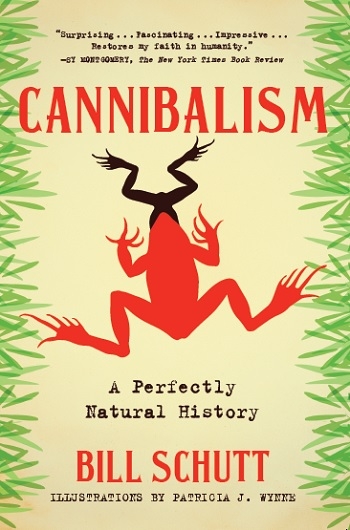
Cannibalism
Bill Schutt | Algonquin 2017
“Surprising. Impressive. Cannibalism restores my faith in humanity.” —The New York Times Book Review
For centuries scientists have written off cannibalism as a bizarre phenomenon with little biological significance. Its presence in nature was dismissed as a desperate response to starvation or other life-threatening circumstances, and few spent time studying it. A taboo subject in our culture, the behavior was portrayed mostly through horror movies or tabloids sensationalizing the crimes of real-life flesh-eaters. But the true nature of cannibalism--the role it plays in evolution as well as human history--is even more intriguing (and more normal) than the misconceptions we’ve come to accept as fact.
In Cannibalism: A Perfectly Natural History, zoologist Bill Schutt sets the record straight, debunking common myths and investigating our new understanding of cannibalism’s role in biology, anthropology, and history in the most fascinating account yet written on this complex topic. Schutt takes readers from Arizona’s Chiricahua Mountains, where he wades through ponds full of tadpoles devouring their siblings, to the Sierra Nevadas, where he joins researchers who are shedding new light on what happened to the Donner Party--the most infamous episode of cannibalism in American history. He even meets with an expert on the preparation and consumption of human placenta (and, yes, it goes well with Chianti).
Bringing together the latest cutting-edge science, Schutt answers questions such as why some amphibians consume their mother’s skin; why certain insects bite the heads off their partners after sex; why, up until the end of the twentieth century, Europeans regularly ate human body parts as medical curatives; and how cannibalism might be linked to the extinction of the Neanderthals. He takes us into the future as well, investigating whether, as climate change causes famine, disease, and overcrowding, we may see more outbreaks of cannibalism in many more species--including our own.
Cannibalism places a perfectly natural occurrence into a vital new context and invites us to explore why it both enthralls and repels us.
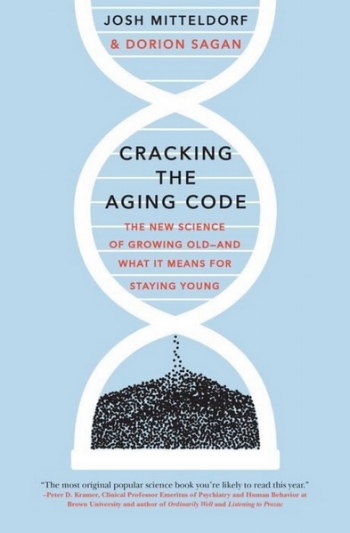
Cracking the Aging Code
Josh Mitteldorf & Dorion Sagan | Flatiron 2016
A revolutionary examination of why we age, what it means for our health, and how we just might be able to fight it.
In Cracking the Aging Code, theoretical biologist Josh Mitteldorf and award-winning writer and ecological philosopher Dorion Sagan reveal that evolution and aging are even more complex and breathtaking than we originally thought. Using meticulous multidisciplinary science, as well as reviewing the history of our understanding about evolution, this book makes the case that aging is not something that “just happens,” nor is it the result of wear and tear or a genetic inevitability. Rather, aging has a fascinating evolutionary purpose: to stabilize populations and ecosystems, which are ever-threatened by cyclic swings that can lead to extinction.
When a population grows too fast it can put itself at risk of a wholesale wipeout. Aging has evolved to help us adjust our growth in a sustainable fashion as well as prevent an ecological crisis from starvation, predation, pollution, or infection.
This dynamic new understanding of aging is provocative, entertaining, and pioneering, and will challenge the way we understand aging, death, and just what makes us human.
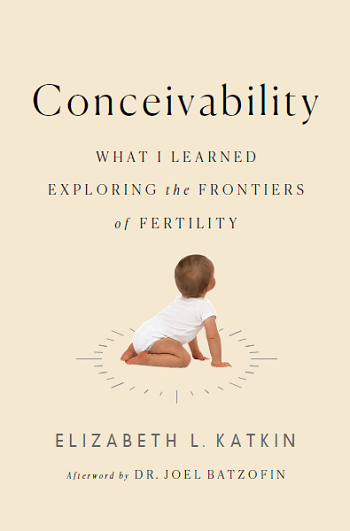
Conceivability
Elizabeth Katkin | Simon & Schuster 2018
Part memoir, part guide, this personal and deeply informative account of one woman’s gripping journey through the global fertility industry in search of the solution to her own “unexplained infertility” exposes eye-opening information about the medical, financial, legal, scientific, emotional and ethical issues at stake.
Although conception may seem like a simple biological process, this is often hardly the case. While many would like to have children, the road toward conceiving and maintaining a pregnancy can be unexpectedly rocky and winding.
Lawyer Elizabeth Katkin never imagined her quest for children would ultimately involve seven miscarriages, eight fresh IVF cycles, two frozen IVF attempts, five natural pregnancies, four IVF pregnancies, ten doctors, six countries, two potential surrogates, nine years, and roughly $200,000. Despite her three Ivy League degrees and wealth of resources, Katkin found she was woefully undereducated when it came to understanding and confronting her own difficulties having children. Shattered by her inability to get and stay pregnant, Katkin surprised even herself by her determination to keep trying. After being told by four doctors she should give up, but without an explanation as to what exactly was going wrong with her body, Katkin decided to look for answers herself. The global investigation that followed revealed that approaches to the fertility process taken in many foreign countries are vastly different than those in the US and UK.
In Conceivability, Elizabeth Katkin, now a mother of two, shares her fertility journey. Part memoir, part practical guide—with a foreword by founder of New York Fertility Services Dr. Joel Batzofin—Conceivability sheds light on the often murky and baffling world of conception science, presenting a shocking exposé into the practical and emotional journey toward creating a happy family. Armed with a wealth of knowledge from her years-long fertility struggle, as well as stories from other women and couples, Katkin bravely offers a look inside one of the most difficult, painful, rewarding, and loving journeys a woman can take.
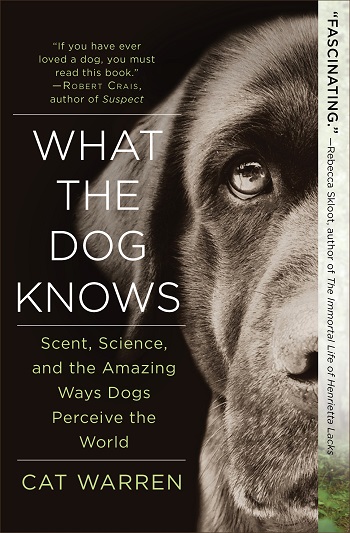
What the Dog Knows
Cat Warren | Touchstone 2013
New York Times Bestseller
A firsthand exploration of the extraordinary abilities and surprising, sometimes life-saving talents of “working dogs”—pups who can sniff out drugs, find explosives, even locate the dead—as told through the experiences of a journalist and her intrepid canine companion, which The New York Times calls “a fascinating, deeply reported journey into the…amazing things dogs can do with their noses.”
There are thousands of working dogs all over the US and beyond with incredible abilities—they can find missing people, detect drugs and bombs, pinpoint unmarked graves of Civil War soldiers, or even find drowning victims more than two hundred feet below the surface of a lake. These abilities may seem magical or mysterious, but author Cat Warren shows the science, the rigorous training, and the skilled handling that underlie these creatures’ amazing abilities.
Cat Warren is a university professor and journalist who had tried everything she could think of to harness her dog Solo’s boundless energy and enthusiasm…until a behavior coach suggested she try training him to be a “working dog.” What started out as a hobby soon became a calling, as Warren was introduced to the hidden universe of dogs who do this essential work and the handlers who train them.
Her dog Solo has a fine nose and knows how to use it, but he’s only one of many astounding dogs in a varied field. Warren interviews cognitive psychologists, historians, medical examiners, epidemiologists, and forensic anthropologists, as well as the breeders, trainers, and handlers who work with and rely on these intelligent and adaptable animals daily. Along the way, Warren discovers story after story that prove the capabilities—as well as the very real limits—of working dogs and their human partners. Clear-eyed and unsentimental, Warren explains why our partnership with working dogs is woven into the fabric of society, and why we keep finding new uses for the wonderful noses of our four-legged friends.
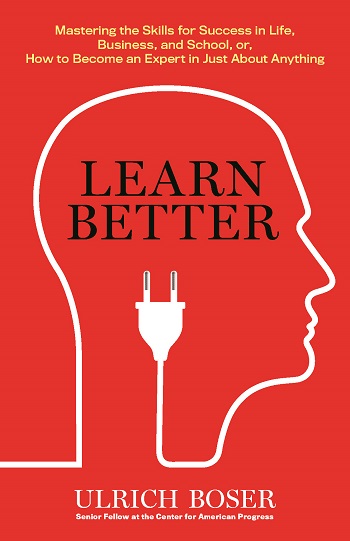
Learn Better
Ulrich Boser | Rodale 2017
Amazon Editors' Best Books of the Year
For centuries, experts have argued that learning was about memorizing information: You're supposed to study facts, dates, and details, burn them into your memory, and then apply that knowledge at opportune times. But this approach to learning isn't nearly enough for the world that we live in today, and in Learn Better journalist and education researcher Ulrich Boser demonstrates that how we learn can matter just as much as what we learn.
In this brilliantly researched book, Boser maps out the new science of learning, showing how simple techniques like comprehension check-ins and making material personally relatable can help people gain expertise in dramatically better ways. He covers six key steps to help you "learn how to learn," all illuminated with fascinating stories like how Jackson Pollock developed his unique painting style and why an ancient Japanese counting device allows kids to do math at superhuman speeds. Boser's witty, engaging writing makes this book feel like a guilty pleasure, not homework.
Learn Better will revolutionize the way students and society alike approach learning and makes the case that being smart is not an innate ability--learning is a skill everyone can master. With Boser as your guide, you will be able to fully capitalize on your brain's remarkable ability to gain new skills and open up a whole new world of possibilities.
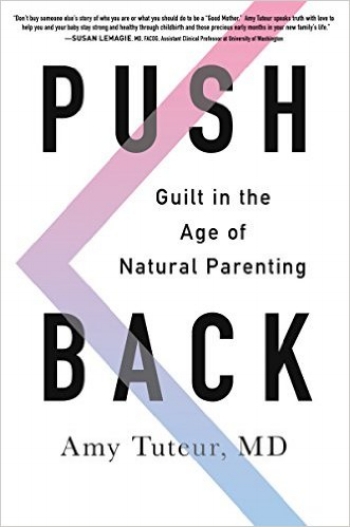
Push Back
Dr. Amy Tuteur | Dey Street 2016
A Harvard-trained obstetrician-gynecologist, prominent blogger, and author of the classic How Your Baby Is Born delivers a timely, important, and sure to be headline-making expose that shines a light on the natural parenting movement and the multimillion-dollar industry behind it.
The natural parenting movement praises the virtues of birth without medical interference, staunchly advocates breastfeeding for all mothers, and hails attachment parenting. Once the exclusive province of the alternative lifestyle, natural parenting has gone mainstream, becoming a lucrative big business today.
But those who do not subscribe to this method are often made to feel as if they are doing their children harm. Dr. Amy Tuteur understands their apprehensions. “Parenting quickly feels synonymous with guilt. And of late, there is no bigger arena for this pervasive guilt than childbirth.” As a medical professional with a long career in obstetrics and gynecology and as the mother of four children, Tuteur is no stranger to the insurmountable pressures and subsequent feelings of blame and self-condemnation that mothers experience during their children’s early years. The natural parenting movement, she contends, is not helping them raise their children better. Instead, it capitalizes on their uncertainty, manipulating parents when they are most vulnerable.
In Push Back, she chronicles the movement’s history from its roots to its modern practices, incorporating her own experiences as a mother and successful OB-GYN with original research on the latest in childbirth science. She also reveals the dangerous and overtly misogynistic motives of some of its proponents—conservative men who sought to limit women’s control and autonomy. As she debunks, one by one, the guilt-inducing myths of natural birth and parenting, Dr. Tuteur empowers women to embrace the method of childbirth that is right for them, while reassuring all parents that the most important thing they can do is love and care for their children.
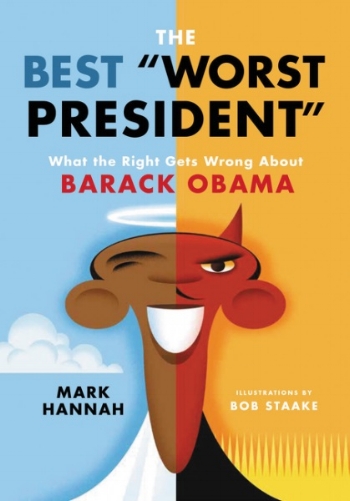
The Best Worst President
Mark Hannah & Bob Staake | Dey Street 2016
Political analyst and Democratic campaign veteran Mark Hannah and renowned New Yorker illustrator Bob Staake give Barack Obama the victory lap he deserves in this compendium that takes the president’s critics head-on and celebrates the president’s many underappreciated triumphs.
Barack Obama’s election in 2008 was a watershed moment in American history that inspired supporters on the Left—and fired up enemies on the Right. Elected in the midst of multiple crises—a Wall Street meltdown that imperiled the global economy and American troops entangled in two foreign wars—Barack Obama’s presidency promised, from the start, to be one of the most consequential presidencies in modern American history.
Although he stabilized the economy and restored America’s prestige on the global stage, President Obama has been denied the credit he deserves, receiving instead acidic commentary from political opponents such as former Vice President Dick Cheney, who declared that Obama was “the worst president in [his] lifetime”—an accusation that reflects the politics of resentment and recrimination that has come to characterize the president’s critics.
In The Best "Worst President", Mark Hannah and New Yorker illustrator Bob Staake swiftly and systematically debunk conservative lies and disinformation meant to negate the president’s accomplishments and damage his reputation—baseless charges too often left unchallenged by the national media. The Best "Worst President" is a whip-smart takedown of these half-truths and hypocrisies, each refuted in a smart, witty, fact-based style. Hannah and Staake not only defend the president but showcase his administration’s most surprising and underappreciated triumphs—making clear he truly is the best “worst president” our nation has ever known.
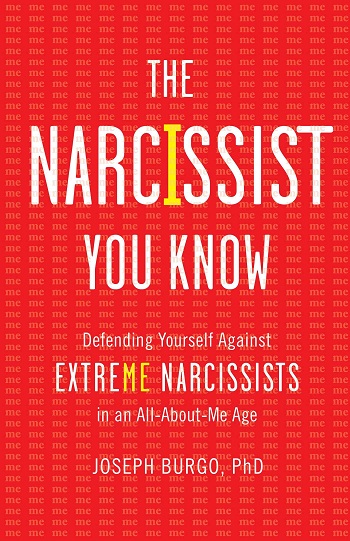
The Narcissist You Know
Joseph Burgo | Touchstone 2015
In the tradition of The Sociopath Next Door, clinical psychologist Joseph Burgo’s The Narcissist You Know is a “clear, easily digestible” (Kirkus Reviews) guide to help you identify, disarm, and coexist with extreme narcissists.
In today’s social media and selfie-obsessed culture, we are living in an age of narcissism—and a society that often celebrates this potentially harmful trait rather than understanding it as a psychological disorder. Scientists are beginning to learn that narcissism exists on a spectrum—much like autism—and most of us exhibit some mild narcissistic tendencies. But one in twenty people fall into a category the author refers to as Extreme Narcissism, in which these self-absorbed characteristics result in destructive behavior that harms not only the individual but everyone around them, including friends, family, and coworkers.
With more than thirty years of experience studying personality disorders and treating extreme narcissists, Dr. Joseph Burgo has developed a useful guidebook to help you “spot narcissists out there in the wild” (Glamour) and then understand and manage the narcissistic personalities in your own life. Relying on detailed profiles, vignettes from the author’s practice, and celebrity biographies, The Narcissist You Know offers easy-to-understand tools and solutions you can use to defuse hostile situations and survive assaults on your self-esteem should you ever find yourself in an extreme narcissist’s orbit.
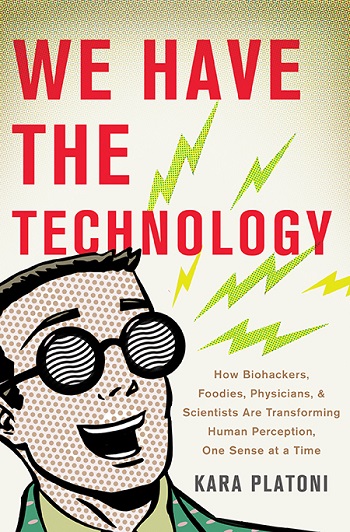
We Have the Technology
Kara Platoni | Basic Books 2015
An award-winning journalist investigates how scientists and citizens around the world are re-tooling our senses-and what their discoveries are teaching us about the nature and future of human perception
How do we know what's real? That's not a trick question: sensory science is increasingly finding that we don't perceive reality: we create it through perception. In We Have the Technology, science writer Kara Platoni guides us through the latest developments in the science of sensory perception.
We Have the Technology introduces us to researchers who are changing the way we experience the world, whether creating scents that stimulate the memories of Alzheimer's patients, constructing virtual limbs that approximate a sense of touch, or building augmented reality labs that prepare soldiers for the battlefield. These diverse investigations not only explain previously elusive aspects of human experience, but offer tantalizing glimpses into a future when we can expand, control, and enhance our senses as never before.
A fascinating tour of human capability and scientific ingenuity, We Have the Technology offers essential insights into the nature and possibilities of human experience.
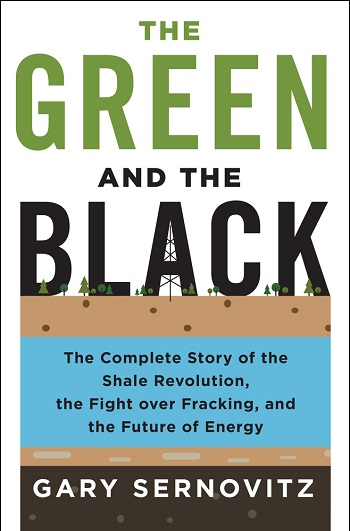
The Green and the Black
Gary Sernovitz | St. Martin's Press 2016
Gary Sernovitz leads a double life. A typical New York liberal, he is also an oilman—a fact his left-leaning friends let slide until the word "fracking" entered popular parlance. "How can you frack?" they suddenly demanded, aghast. But for Sernovitz, the real question is, "What happens if we don't?"
Fracking has become a four-letter word to environmentalists. But most people don't know what it means. In his fast-paced, funny, and lively book, Sernovitz explains the reality of fracking: what it is, how it can be made safer, and how the oil business works.
He also tells the bigger story. Fracking was just one part of a shale revolution that shocked our assumptions about fueling America's future. The revolution has transformed the world with consequences for the oil industry, investors, environmentalists, political leaders, and anyone who lives in areas shaped by the shales, uses fossil fuels, or cares about the climate—in short, everyone. Thanks to American engineers' oilfield innovations, the United States is leading the world in reducing carbon emissions, has sparked a potential manufacturing renaissance, and may soon eliminate its dependence on foreign energy. Once again the largest oil and gas producer in the world, America has altered its balance of power with Russia and the Middle East.
Yet the shale revolution has also caused local disruptions and pollution. It has prolonged the world's use of fossil fuels. Is there any way to reconcile the costs with the benefits of fracking?
To do so, we must start by understanding fracking and the shale revolution in their totality. The Green and the Black bridges the gap in America's energy education. With an insider's firsthand knowledge and unprecedented clarity, Sernovitz introduces readers to the shales—a history-upturning "Internet of oil"—tells the stories of the shale revolution's essential characters, and addresses all the central controversies. To capture the economic, political, and environmental prizes, we need to adopt a balanced, informed perspective. We need to take the green with the black. Where we go from there is up to us.
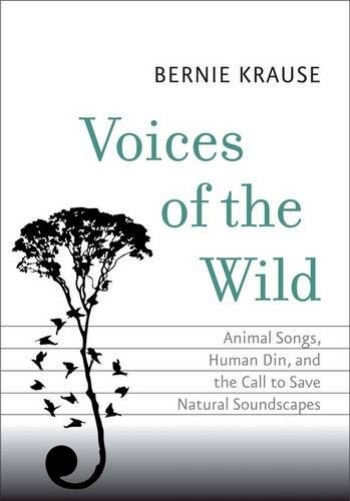
Voices of the Wild
Bernie Krause | Yale University Press 2015
"Voices of the Wild is fascinating, urgent, filled with sound and fury and beauty.”—Richard Louv, author of The Nature Principle and Last Child in the Woods
Since 1968, Bernie Krause has traveled the world recording the sounds of remote landscapes, endangered habitats, and rare animal species. Through his organization, Wild Sanctuary, he has collected the soundscapes of more than 2,000 different habitat types, marine and terrestrial. With powerful illustrations and compelling stories, Krause provides a manifesto for the appreciation and protection of natural soundscapes. In his previous book, The Great Animal Orchestra, Krause drew readers’ attention to what Jane Goodall described as “the harmonies of nature . . . [that are being] one by one by one, snuffed out by human actions.” He now explains that the secrets hidden in the natural world’s shrinking sonic environment must be preserved, not only for our scientific understanding, but for our cultural heritage and humanity’s physical and spiritual welfare.
Krause’s narrative—supplemented by exclusive access to field recordings from the wild—draws on a compelling range of personal anecdotes, histories, and examples to document his early exploration of this field and to lay the groundwork for future generations.
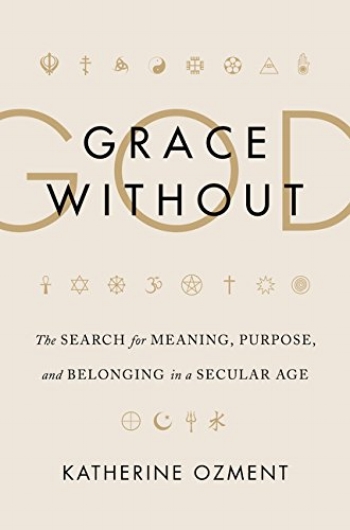
Grace Without God
Katherine Ozment | Harper 2016
Publishers Weekly "Best Books of 2016"
Spirituality & Health Magazine Best Book of 2016
Nautilus Gold Award Winner 2016: Religion and Spirituality of Other Traditions
Meet “the Nones”—In this thought-provoking exploration of secular America, celebrated journalist Katherine Ozment takes readers on a quest to understand the trends and ramifications of a nation in flight from organized religion.
Studies show that religion makes us happier, healthier and more giving, connecting us to our past and creating tight communal bonds. Most Americans are raised in a religious tradition, but in recent decades many have begun to leave religion, and with it their ancient rituals, mythic narratives, and sense of belonging.
So how do the nonreligious fill the need for ritual, story, community, and, above all, purpose and meaning without the one-stop shop of religion? What do they do with the space left after religion? With Nones swelling to one-fourth of American adults, and more than one-third of those under thirty, these questions have never been more urgent.
Writer, journalist, and secular mother of three Katherine Ozment came face-to-face with the fundamental issue of the Nones when her son asked her the simplest of questions: “what are we?” Unsettled by her reply—“Nothing”—she set out on a journey to find a better answer. She traversed the frontier of American secular life, sought guidance in science and the humanities, talked with noted scholars, and wrestled with her own family’s attempts to find meaning and connection after religion.
Insightful, surprising, and compelling, Grace Without God is both a personal and critical exploration of the many ways nonreligious Americans create their own meaning and purpose in an increasingly secular age.

Tiny Hands
Tom Toro | Dock Street Press 2017
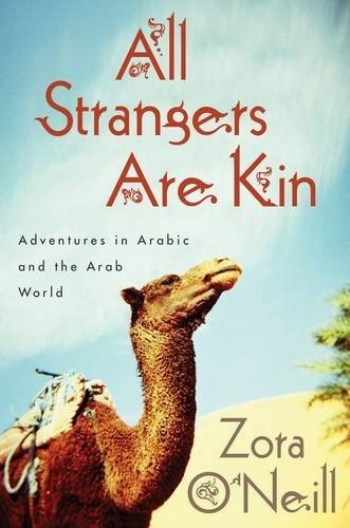
All Strangers Are Kin
Zora O'Neill | Houghton Mifflin Harcourt 2016
“The shaddais the key difference between a pigeon (hamam) and a bathroom (hammam). Be careful, our professor advised, in the first moment of outright humor in class, that you don’t ask a waiter, ‘Excuse me, where is the pigeon?’—or, conversely, order a roasted toilet.”
If you’ve ever studied a foreign language, you know what happens when you first truly and clearly communicate with another person. As Zora O’Neill recalls, you feel like a magician. If that foreign language is Arabic, you just might feel like a wizard.
They say that Arabic takes seven years to learn and a lifetime to master. O’Neill had put in her time. Steeped in grammar tomes and outdated textbooks, she faced an increasing certainty that she was not only failing to master Arabic, but also driving herself crazy. She took a decade-long hiatus, but couldn’t shake her fascination with the language or the cultures it had opened up to her. So she decided to jump back in—this time with a new approach.
Join O’Neill for a grand tour through the Middle East. You will laugh with her in Egypt, delight in the stories she passes on from the United Arab Emirates, and find yourself transformed by her experiences in Lebanon and Morocco. She’s packed her dictionaries, her unsinkable sense of humor, and her talent for making fast friends of strangers. From quiet, bougainvillea-lined streets to the lively buzz of crowded medinas, from families’ homes to local hotspots, she brings a part of the world that is thousands of miles away right to your door.
A natural storyteller with an eye for the deeply absurd and the deeply human, O’Neill explores the indelible links between culture and communication. A powerful testament to the dynamism of language, All Strangers Are Kin reminds us that learning another tongue leaves you rich with so much more than words.
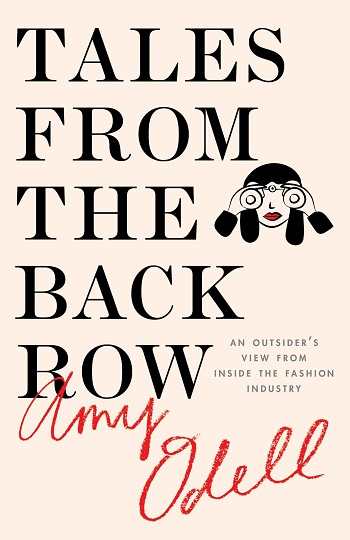
Tales from the Back Row
Amy Odell | Simon & Schuster 2015
A keenly observed collection of personal essays about what it’s like to be a young woman working in the fashion industry, Amy Odell’s Tales from the Back Row offers “a backstage pass to the intimidating, backbiting industry” (US Weekly).
In the “funny, insightful” (Harper’s Bazaar) Tales from the Back Row, Cosmopolitan.com editor Amy Odell takes readers behind the stage of New York’s hottest fashion shows to meet the world’s most influential models, designers, celebrities, editors, and photographers.
But first, she has to push her way through the crowds outside and weave her way through the packed venue, from the very back row to the front. And as Amy climbs the ladder (with tips about how you can, too), she introduces an industry powered by larger-than-life characters: she meets the intimidating Anna Wintour and the surprisingly gracious Rachel Zoe, not to mention the hilarious Chelsea Handler, and more.
As she describes the allure of Alexander Wang’s ripped tights and Marchesa’s Oscar-worthy dresses, Amy layers in something else: how the fashion industry is an exaggerated mirror of human fallibility—reflecting our desperate desire to belong, to make a mark. In her “light-hearted, cocktail-hour confession from someone who is…sober enough to recognize insanity for what it is” (The Washington Post), Amy is the first to admit that as much as she is embarrassed by the thrill she gets when she receives an invitation to an exclusive after-party, she can’t help but RSVP “yes.” Welcome to the weird and wonderful world of high fashion: “Whether you’re interested in pursuing a career in publishing, public relations, or design, or you’re just fascinated with what really goes on behind-the-scenes without the usual sugarcoating, we’d say this is required reading” (Fashionista.com).
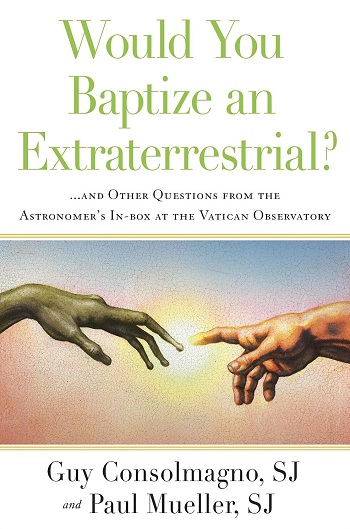
Would You Baptize an Extraterrestrial
Guy Consolmagno, SJ, & Paul Mueller, SJ | Image 2014
Witty and thought provoking, two Vatican astronomers shed provocative light on some of the strange places where religion and science meet.
“Imagine if a Martian showed up, all big ears and big nose like a child’s drawing, and he asked to be baptized. How would you react?” Pope Francis posed that question—without insisting on an answer!—to provoke deeper reflection about inclusiveness and diversity in the Church. But it's not the first time that question has been asked.
Brother Guy Consolmagno and Father Paul Mueller hear questions like that all the time. They’re scientists at the Vatican Observatory, the official astronomical research institute of the Catholic Church. In Would You Baptize an Extraterrestrial? they explore a variety of questions at the crossroads of faith and reason: How do you reconcile the The Big Bang with Genesis? Was the Star of Bethlehem just a pious religious story or an actual description of astronomical events? What really went down between Galileo and the Catholic Church—and why do the effects of that confrontation still reverberate to this day? Will the Universe come to an end? And… could you really baptize an extraterrestrial?
With disarming humor, Brother Guy and Father Paul explore these questions and more over the course of six days of dialogue. Would You Baptize an Extraterrestrial will make you laugh, make you think, and make you reflect more deeply on science, faith, and the nature of the universe.
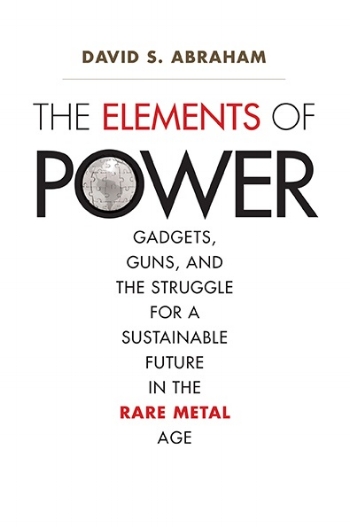
The Elements of Power
David S. Abraham | Yale University Press 2015
A natural resource strategist investigates the growing global demand for rare metals and what it means to the environment and our future
Our future hinges on a set of elements that few of us have even heard of. In this surprising and revealing book, David S. Abraham unveils what rare metals are and why our electronic gadgets, the most powerful armies, and indeed the fate of our planet depend on them. These metals have become the building blocks of modern society; their properties are now essential for nearly all our electronic, military, and “green” technologies. But their growing use is not without environmental, economic, and geopolitical consequences.
Abraham traces these elements’ hidden paths from mines to our living rooms, from the remote hills of China to the frozen Gulf of Finland, providing vivid accounts of those who produce, trade, and rely on rare metals. He argues that these materials are increasingly playing a significant role in global affairs, conferring strength to countries and companies that can ensure sustainable supplies.
Just as oil, iron, and bronze revolutionized previous eras, so too will these metals. The challenges this book reveals, and the plans it proposes, make it essential reading for our rare metal age.

The Taste of Ashes
The Taste of Ashes
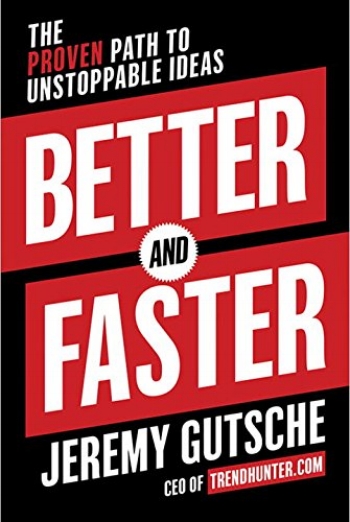
Better and Faster
Jeremy Gutsche | Currency 2015
Out-innovate, outsmart and outmaneuver your competitors with tactics from the CEO of TrendHunter.com, Jeremy Gutsche.
In our world of chaos and change, what are you overlooking? If you knew the answer, you’d be a better innovator, better manager, and better investor.
This book will make you better by teaching you how to overcome neurological traps that block successful people, like you, from realizing your full potential. Then, it will make you faster by teaching you 6 patterns of opportunity: Convergence, Divergence, Cyclicality, Redirection, Reduction and Acceleration. Each pattern you’ll learn is a repeatable shortcut that has created fortunes for ex-criminals, reclusive billionaires, disruptive CEOs and ordinary people who unexpectedly made it big.
In an unparalleled study of 250,000 ideas, Jeremy and his TrendHunter.com team have leveraged their 100,000,000 person audience to study what actually causes opportunity: data-driven research that was never before possible. The result is a series of frameworks battle-tested with several hundred brands, and top executives at some of the most successful companies in the world who rely on Jeremy to accelerate their hunt for ideas.
Better and Faster will help you learn to see patterns and clues wherever you look that will put you on the smarter, easier path to finding those breakthrough ideas, faster.

Section 60
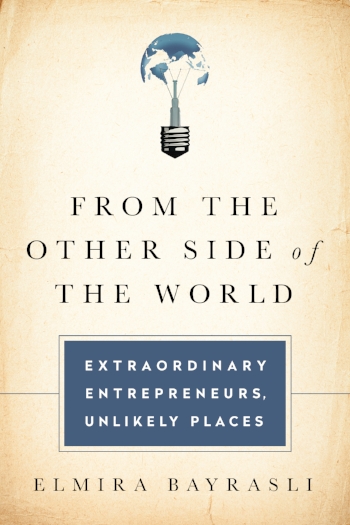
From the Other Side of the World
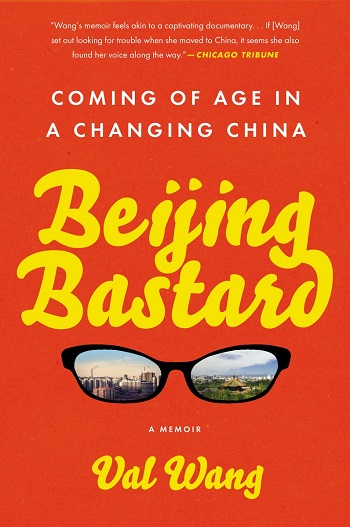
Beijing Bastard
Val Wang | Avery 2014
A humorous and moving coming-of-age story that brings a unique, not-quite-outsider’s perspective to China’s shift from ancient empire to modern superpower
Raised in a strict Chinese American household in the suburbs, Val Wang dutifully got good grades, took piano lessons, and performed in a Chinese dance troupe—until she shaved her head and became a leftist, the stuff of many teenage rebellions. But Val’s true mutiny was when she moved to China, the land her parents had fled before the Communist takeover in 1949.
Val arrives in Beijing in 1998 expecting to find freedom but instead lives in the old city with her traditional relatives, who wake her at dawn with the sound of a state-run television program playing next to her cot, make a running joke of how much she eats, and monitor her every move. But outside, she soon discovers a city rebelling against its roots just as she is, struggling too to find a new, modern identity. Rickshaws make way for taxicabs, skyscrapers replace hutong courtyard houses, and Beijing prepares to make its debut on the world stage with the 2008 Olympics. And in the gritty outskirts of the city where she moves, a thriving avant-garde subculture is making art out of the chaos. Val plunges into the city’s dizzying culture and nightlife and begins shooting a documentary about a Peking Opera family who is witnessing the death of their traditional art.
Brilliantly observed and winningly told, Beijing Bastard is a compelling story of a young woman finding her place in the world, and of China, as its ancient past gives way to a dazzling but uncertain future.
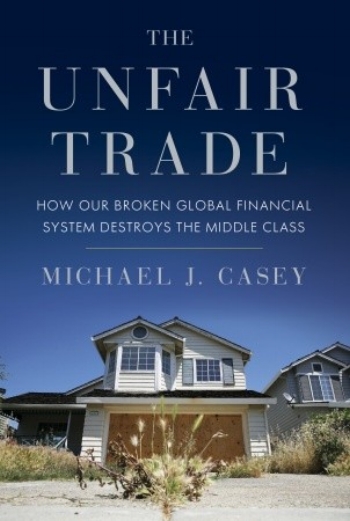
The Unfair Trade
Michael Casey
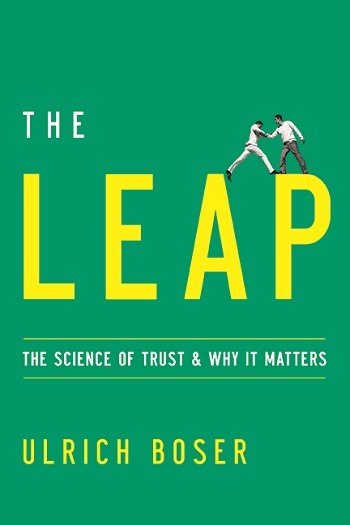
The Leap
Ulrich Boser | New Harvest 2014
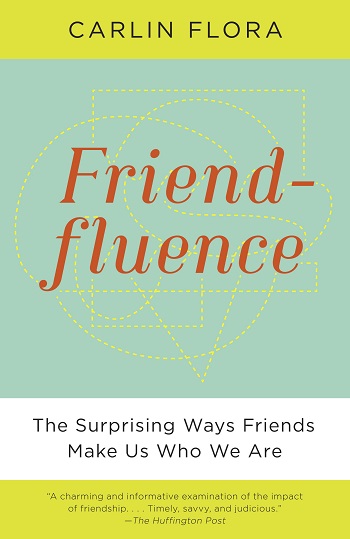
Friendfluence
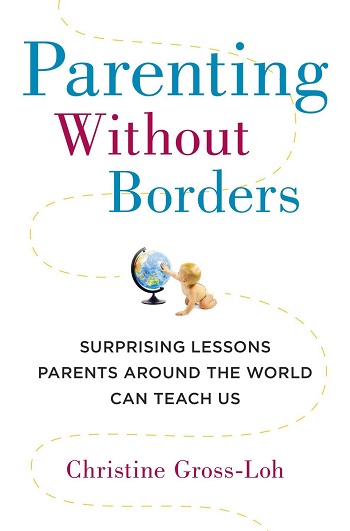
Parenting Without Borders
Parenting Without Borders
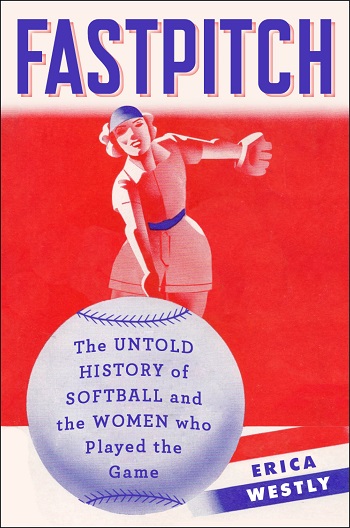
Fastpitch
Erica Westly | Touchstone 2017
“A League of Their Own for the softball set” (Lily Koppel, bestselling author of The Astronaut Wives Club), Fastpitch is hidden history at its most intriguing—the tale of the forgotten beginnings of one of the most popular and widely played sports today.
Softball is played by tens of millions in various age groups all around the world, but the origins of this beloved sport (and the charismatic athletes who helped it achieve prominence in the mid-twentieth century) have been shrouded in mystery…until now.
Fastpitch brings to vivid life the eclectic mix of characters that make up softball’s vibrant 129-year history. From its humble beginnings in 1887, when it was invented in a Chicago boat club and played with a broomstick, to the rise in the 1940s and 1950s of professional-caliber, company-sponsored teams that toured the country in style, softball’s history is as varied as it is fascinating. Though it’s thought of today as a female sport, fastpitch softball’s early history is full of male stars, such as the vaudeville-esque Eddie Feigner, whose signature move was striking out batters while blindfolded.
But because softball was one of the only team sports that also allowed women to play competitively, it took on added importance for female athletes. Women like Bertha Ragan Tickey, who set strikeout records and taught Lana Turner to pitch, and her teammate Joan Joyce, who struck out baseball star Ted Williams, made a name—and a life—for themselves in an era when female athletes had almost no prospects. Softball allowed them to flourish, and they in turn inspired a whole new generation of athletes.
Featuring eight pages of captivating, vintage photos and compelling, well-researched historical commentary, this “fun and entertaining read” (Billie Jean King) chronicles softball’s unique history as well as its uncertain future (as evidenced by its controversial elimination from the 2012 Olympics, and the mounting efforts to have it reinstated). A celebration of this distinctively American game and the role it plays in our culture today, Westly has written “a must-read for anyone who loves the sport” (Jonathan Fader, author of Life as Sport).
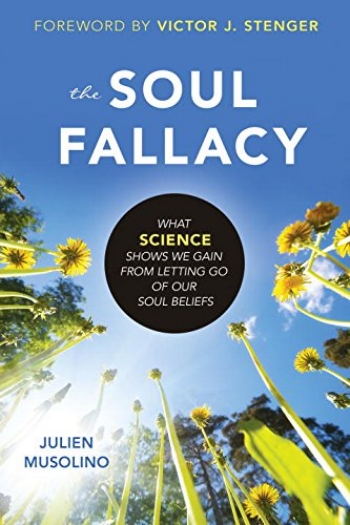
The Soul Fallacy
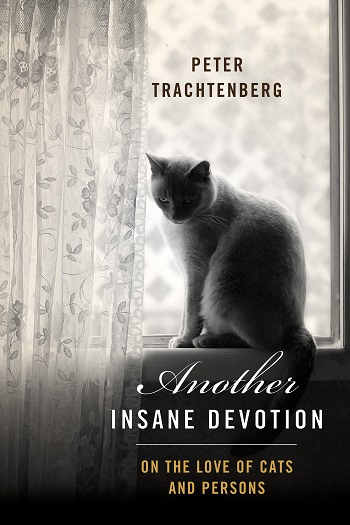
Another Insane Devotion
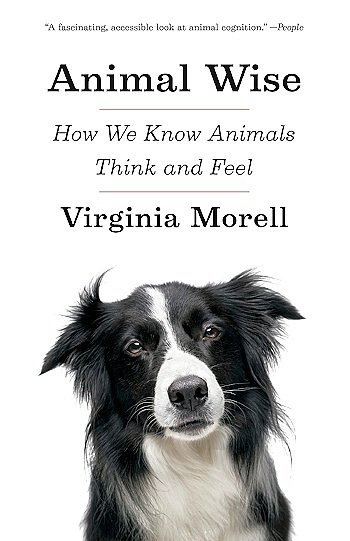
Animal Wise
Virginia Morell
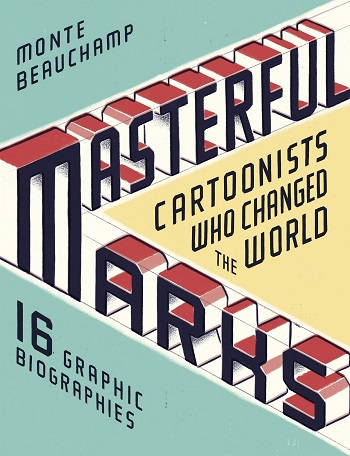
Masterful Marks
Monte Beauchamp
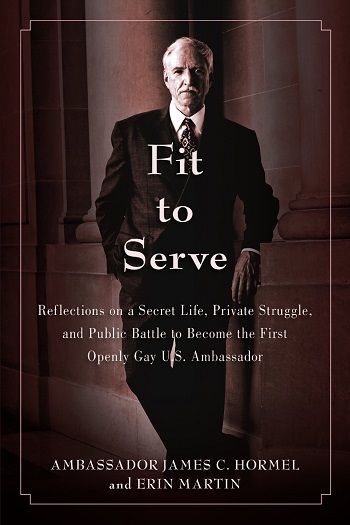
Fit to Serve
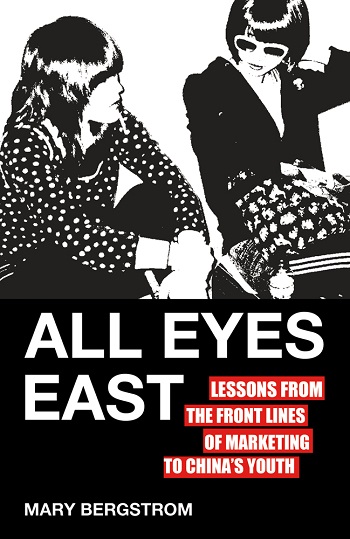
All Eyes East
Mary Bergstrom
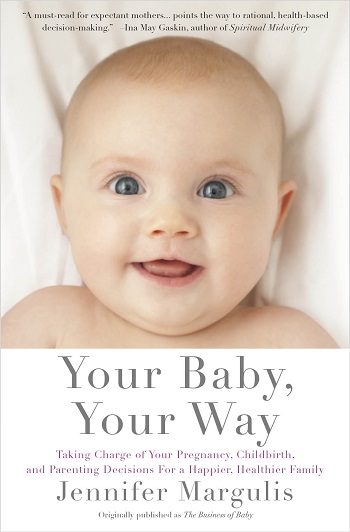
Your Baby, Your Way
Jennifer Margulis
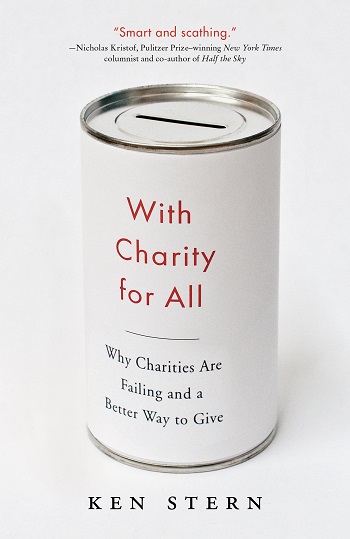
With Charity for All
Ken Stern | Doubleday 2013
Vast and largely unexamined, the world of American charities accounts for fully 10 percent of economic activity in this country, yet operates with little accountability, no real barriers to entry, and a stunning lack of evidence of effectiveness. In With Charity for All, Ken Stern reveals a problem hidden in plain sight and prescribes a whole new way for Americans to make a difference.
Each year, two thirds of American households donate to charities, with charitable revenues exceeding one trillion dollars. Yet while the mutual fund industry employs more than 150,000 people to rate and evaluate for-profit companies, nothing remotely comparable exists to monitor the nonprofit world. Instead, each individual is on his or her own, writing checks for a cause and going on faith. Ken Stern, former head of NPR and a long-time nonprofit executive, set out to investigate the vast world of U.S. charities and discovered a sector hobbled by deep structural flaws. Unlike private corporations that respond to market signals and go out of business when they fail, nonprofit organizations have a very low barrier to entry (the IRS approves 99.5 percent of applications) and once established rarely die. From water charities aimed at improving life in Africa to drug education programs run by police officers in thousands of U.S. schools, and including American charitable icons such as the Red Cross, Stern tells devastating stories of organizations that raise and spend millions of dollars without ever cracking the problems they set out to solve.
But he also discovered some good news: a growing movement toward accountability and effectiveness in the nonprofit world. With Charity for All is compulsively readable, driven in its early pages by the plight of millions of Americans donating to good causes to no good end, and in its last chapters by an inspiring prescription for individual giving and widespread reform.
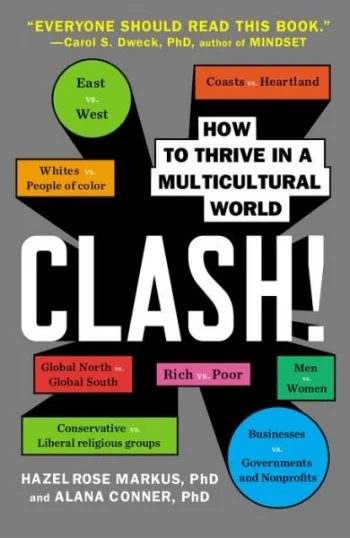
Clash!
Hazel Rose Markus & Alana Conner
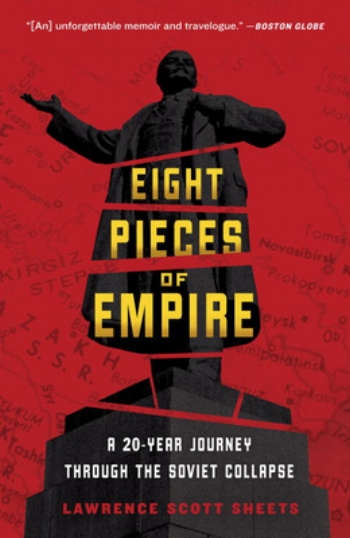
Eight Pieces of Empire
Lawrence Scott Sheets
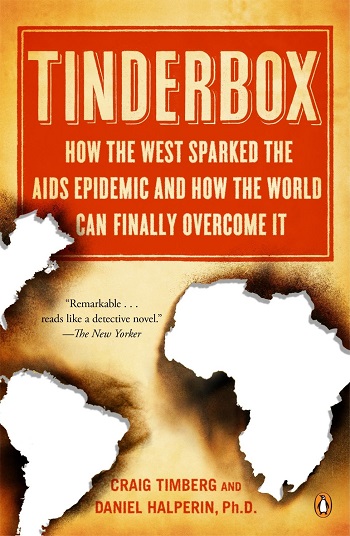
Tinderbox
Craig Timberg & Daniel Halperin
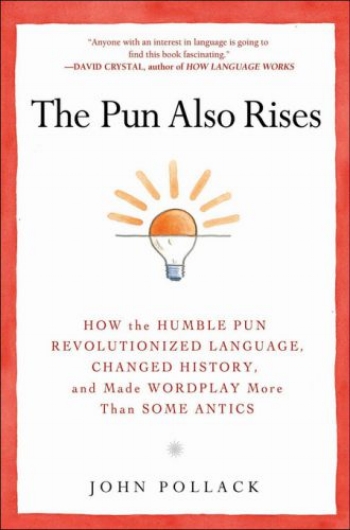
The Pun Also Rises
John Pollack
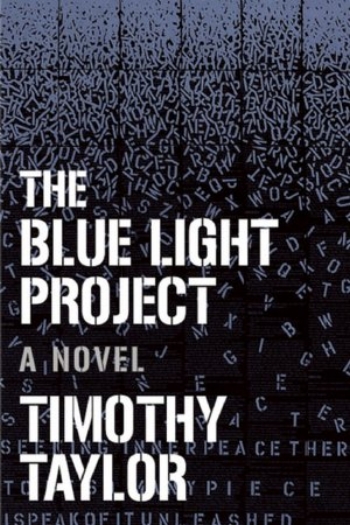
The Blue Light Project
Timothy Taylor
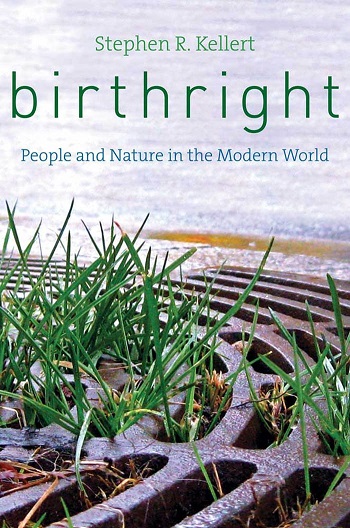
Birthright
Stephen Kellert
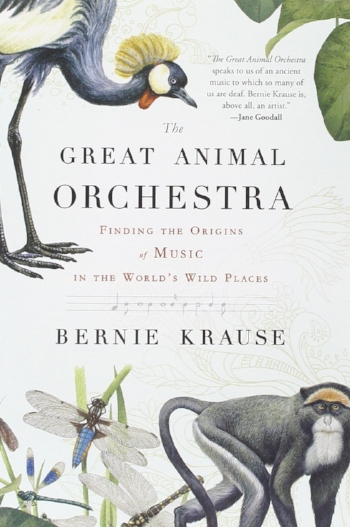
The Great Animal Orchestra
Bernie Krause
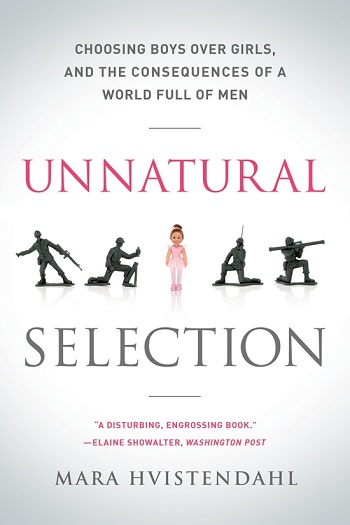
Unnatural Selection
Mara Hvistendahl
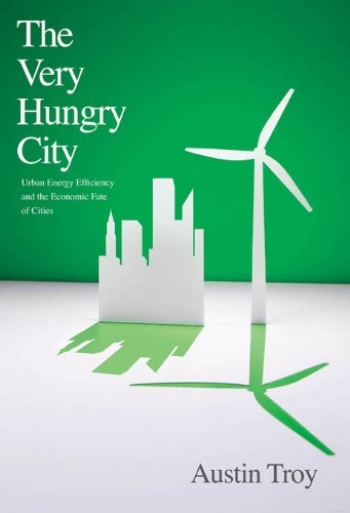
The Very Hungry City
Austin Troy | Yale University Press 2012
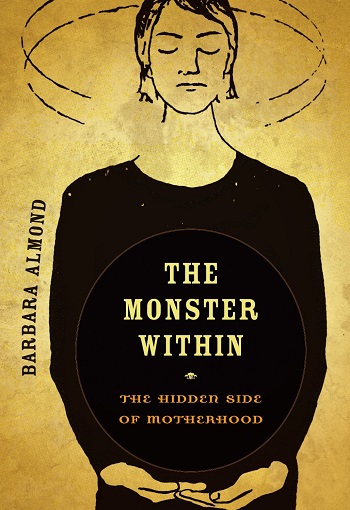
The Monster Within
Barbara Almond | University of California Press 2010
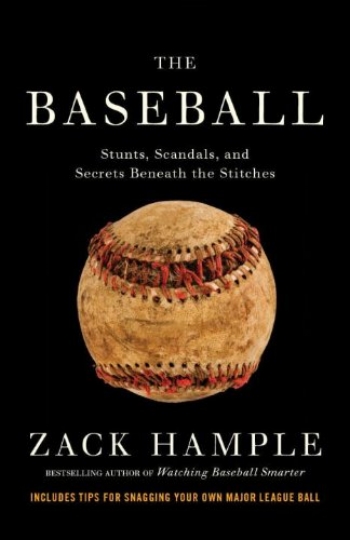
The Baseball
Zack Hample | Anchor 2011
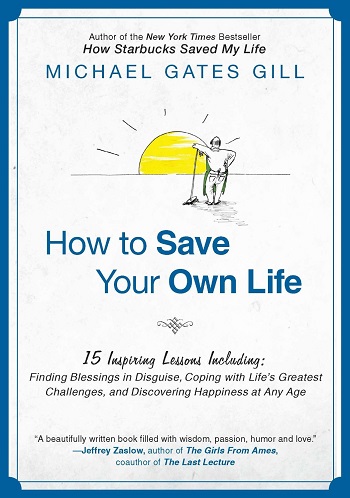
How to Save Your Own Life
Michael Gates Gill
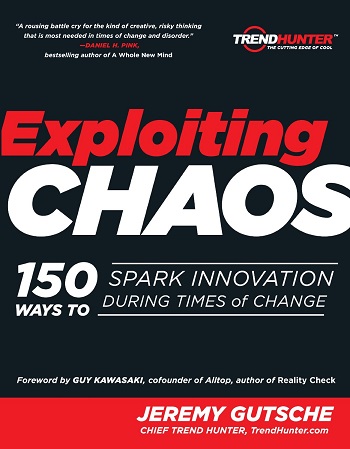
Exploiting Chaos
Jeremy Gutsche
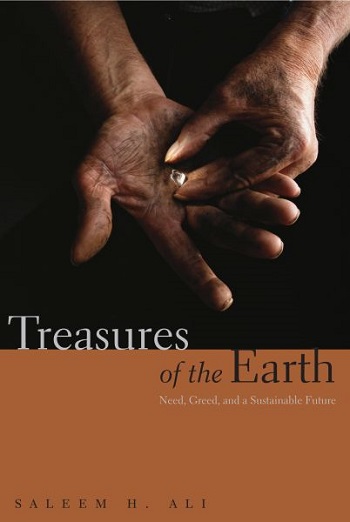
Treasures of the Earth
Saleem Ali
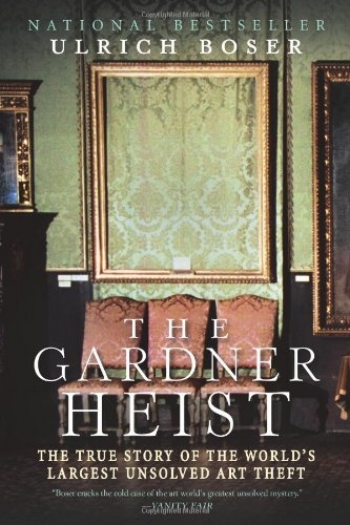
The Gardner Heist
Ulrich Boser
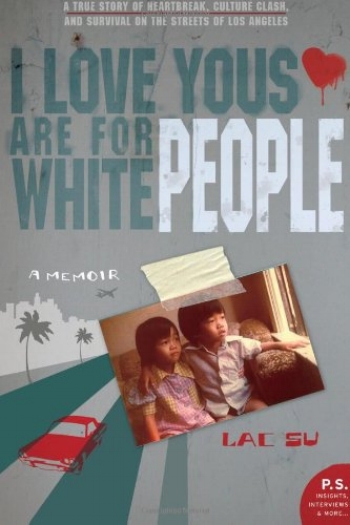
I Love Yous Are for White People
Lac Su
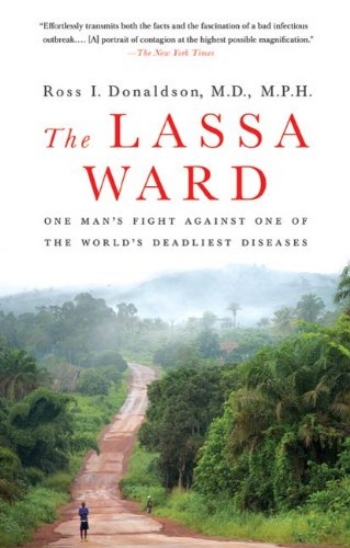
The Lassa Ward
Ross Donaldson
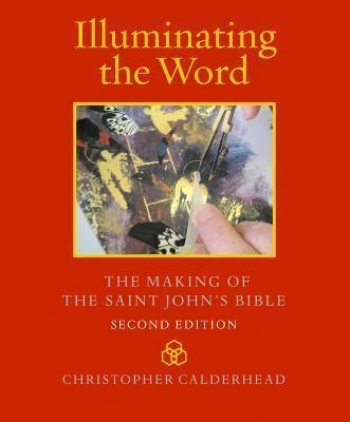
Illuminating the Word
Christopher Calderhead
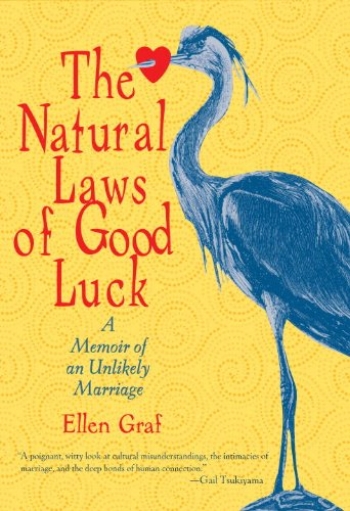
The Natural Laws of Good Luck
Ellen Graf | Shambhala 2009
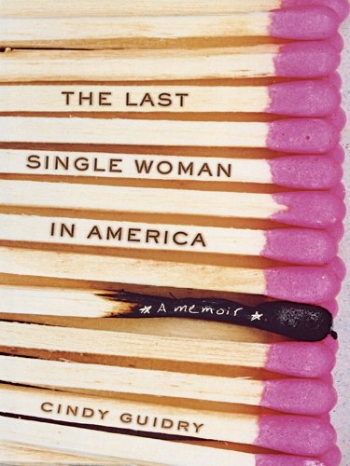
The Last Single Woman in America
Cindy Guidry
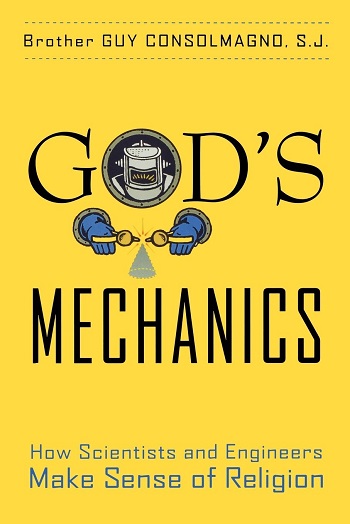
God's Mechanics
Br. Guy Consolmagno
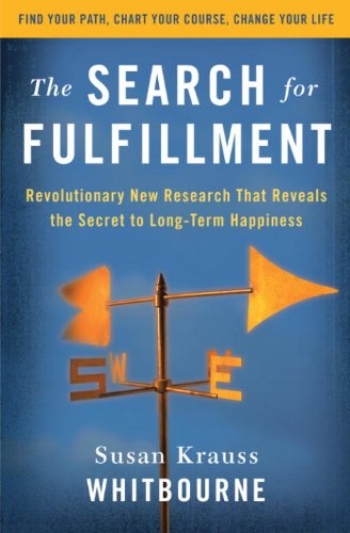
The Search for Fulfillment
Susan Krauss Whitbourne
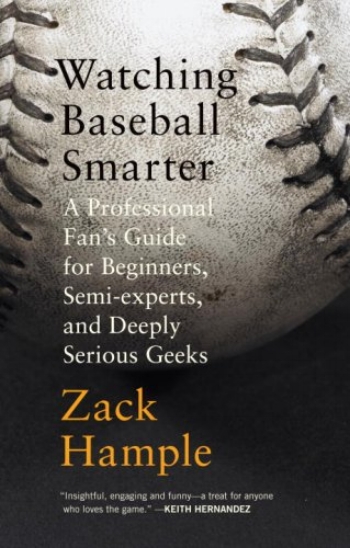
Watching Baseball Smarter
Zack Hample
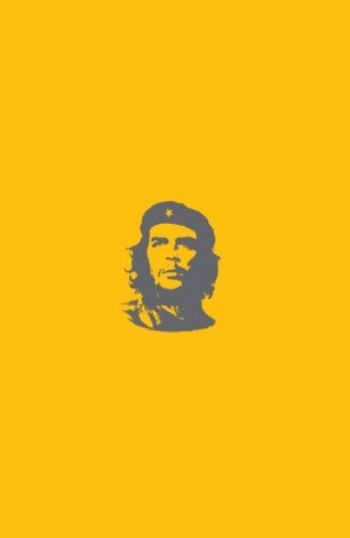
Che's Afterlife
Michael Casey

Tastes Like Cuba
Eduardo Machado
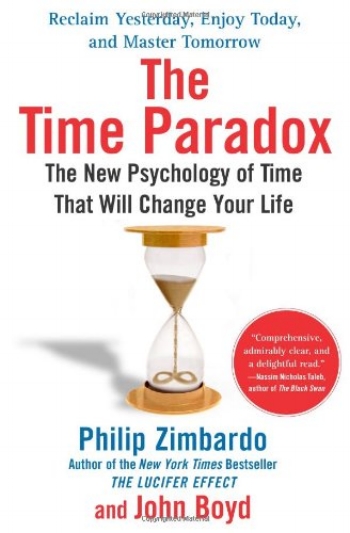
The Time Paradox
Philip Zimbardo & John Boyd

Wild Soundscapes
Bernie Krause
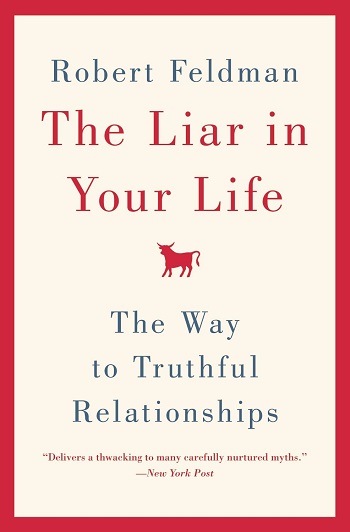
The Liar in Your Life
Robert Feldman
